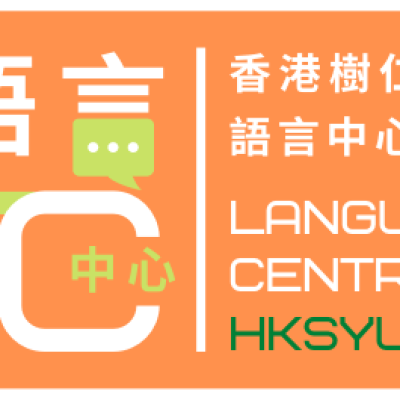Sessions / Presentation
Technique Feature Analysis - Remastered: Developing an instrument for designing effective digital game-based vocabulary learning activities #4352
Learning vocabulary incidentally (IVL) can increase lexicon more qualitatively than quantitatively; therefore, many techniques have been proposed to enhance quantitative gains. Among them, technique feature analysis (TFA), and digital game-based vocabulary learning (DGBVL) are the focus of this study. However, the TFA checklist precision was found to be random owing to factors that cause cognitive overload, especially, in DGBVL activities. This study tried to improve TFA by examining the effect of cognitive loads on DGBVL activites. 140 Omani Arabic speakers (18 to 19 year-old) with CEFR A2-level proficiency in English were randomly assigned to three experimental groups, and a control group. A specific DGBVL activity was designed for each experimental group to control a source of cognitive load. Target words were 10 infrequent names of inanimate objects which were replaced with pseudowords. Participants completed their DGBVL activities individually and were tested immediately and three weeks later on 8 aspects of word knowledge. The results showed that controlling sources of cognitive load in DGBVL activities led to a) more effective IVL gains, b) especially in receptive knowledge of orthography and productive and receptive knowledge of meaning recognition, and many more which will be discussed beside introducing the remastered version of TFA.
Transforming English Language Education with AI: Strategies for personalized learning and teacher’s empowerment #4362
The incorporation of artificial intelligence (AI) into educational systems opens up substantial possibilities for revolutionizing English language teaching (ELT). This proposal investigates how AI technologies can improve personalized learning experiences and strengthen educator capabilities. AI uses adaptive learning platforms, intelligent tutoring systems (ITS), and natural language processing (NLP) tools to customize teaching for each learner while delivering data insights for teachers to improve their teaching methods.
The discussion will showcase particular AI solutions including automated essay scoring systems like Grammarly and Turnitin, conversational AI tools for language practice such as ChatGPT and Duolingo’s AI tutors, and adaptive learning platforms like Carnegie Learning and ALEKS. Successful ELT implementations will be demonstrated through case studies that highlight advantages such as enhanced engagement and proficiency while examining obstacles including data privacy issues, algorithmic bias, and equitable access.
The session will examine how educators must adapt their roles in AI-powered classrooms through necessary professional training to utilize these new tools effectively. The session will provide practical strategies for designing curricula and training teachers that enable participants to apply AI tools for enhanced language teaching.
Upside Down and Inside out: Flip your Classroom via "Rosetta Stone" to Improve Active and Autonomous Learning #4365
Recently, flipped classroom models have been increasingly popular as pedagogical tools that promote active and independent learning. However, in the Moroccan context, these concepts of flipped classroom and e-learning strategies are still lagging behind. To highlight this issue, this study investigates students’ engagement and self-directed learning in language instruction through the use of "Rosetta Stone" as an adaptive language learning platform in conjunction with the flipped classroom paradigm. To optimize the potential of blended learning settings, this study focuses on interactive, student-centered activities during in-person sessions and moves receptive skills, such as listening and reading outside the classroom. Surveys, classroom observations, and performance analyses grids are all part of the mixed-methods approach used in this case study of master's students at the Polydisciplinary Faculty of Taza. The findings show notable gains in students’ autonomy, critical thinking, and language acquisition. These results highlight how well adaptive learning tools like "Rosetta Stone" and flipped classroom concepts work together to produce engaging and inclusive learning environments. The study provides insights for educators looking to modernize and bridge traditional and technology-driven pedagogical approaches. This study adds to the larger debate on creative teaching strategies in higher education in Morocco.
Measuring the Impact of AWE on EFL Writing: A CAF Framework Analysis #4170
This presentation examines the quantitative effects of automated writing evaluation (AWE) on EFL learners' writing development using the complexity, accuracy, and fluency (CAF) framework. Our study compared two university-level EFL writing classes: one receiving combined AWE and teacher feedback, and another receiving only teacher feedback. Analysis focused on specific CAF metrics including syntactic complexity (mean length of T-units), lexical diversity (type-token ratio), grammatical accuracy (errors per 100 words), and fluency (total word count). Results revealed that the AWE-supported group demonstrated significantly greater improvements in grammatical accuracy (23% reduction in errors) and lexical diversity (18% increase), with more modest gains in syntactic complexity. These findings align with recent research by Barrot (2021) and Guo et al. (2022) on AWE's differential impact across writing dimensions. This presentation provides practitioners with a practical CAF-based benchmark for evaluating AWE's effectiveness in their own classrooms, including specific metrics and measurement techniques. Attendees will gain insights into which aspects of student writing most benefit from AWE integration and how to implement similar assessment approaches in their teaching contexts.
Applying DeepSeek to Evaluate Students’ Literature Review Writing #4195
Writing a literature review in English presents significant challenges for EFL undergraduate students in crafting research proposals or papers. While AI tools can aid in sourcing relevant materials, summarizing key concepts, and translating students’ ideas into English, their outputs often remain fragmented, offering limited guidance on constructing a coherent logical structure. This study investigates the pedagogical value of the And, But, Therefore (ABT) narrative framework (Olson, 2015) by analysing its implementation in an English for Academic Purposes course. Seventy-five students enrolled in 2024 applied the ABT framework to organize their literature review sections, with DeepSeek-R1 analysing the frequency of contrastive (BUT) and consequential (THEREFORE) conjunctions in their writing. Students exhibited a noticeably improved ability to synthesize arguments and structure reviews cohesively. Results indicate that explicit training in narrative frameworks enhances students’ capacity to organize academic writing systematically.
The Impact of Foreign Language Speaking Anxiety and Enjoyment on ASR-Based and Human-Rated Read-Speech Evaluation #4208
Foreign language speaking anxiety (FLSA) is a critical factor in students’ oral proficiency, with lower-anxiety levels associated with better performance. Positive affective states, such as foreign language speaking enjoyment (FLSE), are also believed to influence speech competence. This mixed-methods study investigates the predictive power of FLSA and FLSE on oral assessment scores, using a combination of human-rated and automatic speech recognition (ASR)-based evaluations. Participants were 159 first-year students from two non-English departments at a state university in Indonesia. They completed an oral assessment as part of their final-term English evaluation, which was rated by their teacher and analyzed using Speechace, an ASR-based language learning platform. The assessment consisted of a one-paragraph read-speech task. Results showed a significant negative correlation between FLSA and FLSE, indicating that lower anxiety was associated with higher enjoyment. Both FLSA and FLSE were significant predictors of human-rated and ASR-based scores for the read-speech task. Additionally, three ASR-generated metrics (pronunciation accuracy, words per minute, and pause frequency) and teacher-rated impromptu speech scores were examined. The study discusses the implications of these findings for language assessment and instruction, highlighting the importance of considering affective factors in oral proficiency development. Limitations and suggestions for future research are also addressed.
A Blessing or a Curse? The Role of GenAI in University Students' Language Learning #4228
While generative artificial intelligence (GenAI) tools have had a transformative impact on language education, the actual use of these tools by language learners in everyday learning remains underexplored. To address this gap, we conducted a qualitative study with 150 students at a Chinese university, using narrative frames to investigate their engagement with GenAI. Students reflected on their language learning experiences and provided evidence (e.g., screenshots) of GenAI use, focusing on critical incidents they encountered. Follow-up interviews with 10 students explored their motivations, values, and reflections on GenAI. The findings showed that students engaged with GenAI in a basic manner, with potential ethical concerns about when and how to apply it in different aspects of their language learning and assessment. The rise of GenAI also led to negative feelings about the traditional roles of language teachers and students’ self-perceptions as learners. This highlights the need for digital literacy education regarding GenAI and emphasizes the importance of maintaining the humanistic nature of language teaching. This aspect should not be overshadowed by a technical view amplified by GenAI. The study concludes with practical implications for integrating GenAI ethically and sustainably into language education.
TESOL Professors’ AI-Assisted Authentic Communicative Styles and Culturally Sustaining Pedagogy (CSP) in Asynchronous Courses #4231
Striking a balance between automation and human interaction (Selwyn, 2019), this qualitative phenomenological study, utilizing keyword analysis--a corpus-based technique (Culpeper & Qian, 2020), explored six TESOL professors/teacher educators’ AI-assisted communicative styles and culturally sustaining pedagogy in asynchronous interactions in graduate TESOL courses with high student satisfaction ratings. The conceptual framework consists of Spencer-Oatey’s (2008) rapport management framework (2008) and Papp and Cottrell’s (2021) best teacher professional learning “directly connected to teachers' working contexts and problems of practice; so, actions are practical, relevant to teachers' needs, and contribute to achieving valued student outcomes” (p.121). The study analyzed 2190 discussion and grading posts from Canvas courses with 9 out of 10 ratings on faculty performance to examine how these communicative styles foster learning outcomes and engagement. Findings revealed the major styles-- expressiveness, restraint, directness, and engaging key phrase templates facilitate learner engagement and rapport among asynchronous online students. Utilizing research findings and practical ways to incorporate AI tools into effective online teaching and retrospective reflections on student learning outcomes for development with AI are thus recommended. Actionable human-centric integration of AI insights for instructors and instructional designers to optimize communicative strategies and boost online student learning and satisfaction will be shared.
Building Confidence Through AI-Assisted Revision: Impact on Japanese EFL Students' Speaking and Writing Skills #4298
This presentation reports on empirical research examining how AI-assisted text revision affected first-year Japanese university students' confidence and language skills. In a six-week project, students progressed through a scaffolded cycle: writing responses to prompts, recording spoken versions of their written texts, revising their texts using AI tools, and finally recording the revised versions.
Data analysis from 232 participants revealed that 81% reported increased confidence in their English abilities after using AI for revision. Students identified grammar (153 mentions), vocabulary (107 mentions), and sentence structure (106 mentions) as the primary areas of improvement. While self-reported data was the primary assessment method, the research design allowed students to directly compare their original and AI-revised texts, creating heightened awareness of language patterns.
While ChatGPT was the dominant tool (67.7%), students independently selected diverse AI resources including DeepL (5.8%) and Microsoft Copilot (4.9%). The study demonstrates how structured AI integration creates a positive feedback loop between writing and speaking skills. The write → speak → AI-revise → speak revised text sequence provided students with immediate corrective feedback while building confidence through guided improvement.
This research contributes practical insights for instructors seeking to implement AI tools as confidence-building resources rather than mere shortcuts.
The Mediator Role of Psychological Capital Between Academic Self-Efficacy and Digital Informal Learning #4307
In today's rapidly evolving educational landscape, informal digital learning has become an integral part of adult language acquisition. This study investigates the mediating role of psychological capital perceptions in the relationship between academic self-efficacy and digital informal learning competence among 220 adult English as a Foreign Language learners recruited through convenience sampling at a foundation university in Turkey. Data were collected using validated measurement scales—including Digital Informal Learning, Psychological Capital, and Academic Self-Efficacy—to examine how self-efficacy beliefs influence learners’ engagement with digital tools for informal learning, and how psychological capital (comprising self-efficacy, optimism, hope, and resilience) contributes to this process. Quantitative data were analyzed using mediation analysis to examine the indirect effects of academic self-efficacy on digital informal learning competence through psychological capital. The findings suggest that psychological capital serves as a significant mediator, enhancing learners' confidence and adaptability in digital learning environments. These insights highlight the importance of fostering psychological capital to improve self-directed learning and academic success. The study contributes to the growing body of research on digital learning strategies and psychological factors in language education, offering practical implications for educators and policymakers aiming to optimize informal digital learning experiences.
Low-Tech, High Engagement: A Case Study on the Implementation of Headset-Free VR in EFL Classrooms #4309
In many low-resource contexts, limited infrastructure and high costs hinder English as a Foreign Language (EFL) instructors from incorporating immersive technologies. This study proposes low-tech, headset-free virtual reality (VR) integration into EFL classrooms to overcome these barriers. Drawing on cost-effective tools, web-based platforms, and creative in-class techniques, this qualitative case study explores the impact of accessible immersive experiences on student engagement and the learning environment. Data were collected over two semesters through classroom observations and one-on-one semi-structured interviews with 10 adult beginner Turkish EFL learners recruited through convenience sampling at a foundation university in Turkey. Data were analyzed using bottom-up content analysis. Preliminary findings suggest that low-tech VR enhances student motivation and fosters a stronger sense of belonging and classroom community. This presentation will showcase practical strategies, classroom examples, and broader implications for democratizing immersive learning in under-resourced educational settings.
A Piloting Study for a Human-Computer Integrated Feedback Approach in Academic Writing #4348
Providing feedback on student writing in a second language is among teachers’ most vital but demanding responsibilities. Automated Writing Evaluation (AWE) tools, like Grammarly and ChatGPT, have surfaced as promising aids to assist teachers in this task, yet the balance and collaboration between human and machine-generated feedback seem to remain a dynamic and evolving aspect as technological capabilities progress. Therefore, this study aims to investigate the differences in the types of feedback provided by ChatGPT versus the integrated feedback from Grammarly and teachers. Thus, this research seeks to explore the variations in feedback types generated by ChatGPT compared to the combined feedback from Grammarly and a lecturer at a state university. The five participants were randomly-chosen first-year students studying in an English Language Teaching Program. The results revealed variations in feedback distribution depending on the individual student’s writing, meaning some essays triggered more AI feedback while others required more human intervention. Teachers and Grammarly seem to focus on grammar and structure more, while ChatGPT might emphasize clarity, cohesion, and argumentation. This study will explore the reasons behind this variation and the feedback types emphasized, aiming to propose a hybrid approach to feedback in academic writing.
Exploring Interaction with AI Chatbots for Professional Conversation Practice Among L2 English Engineering Students #4353
AI-driven chatbots are increasingly used in language learning to offer personalized practice and promote learner autonomy. However, chatbot interactions are typically individual and relatively new, leaving gaps in understanding how learners engage with these tools. This study analyzes interactions between engineering students and a Poe-based chatbot designed to act as an investor evaluating student proposals. The goal is to help students prepare for live assessed simulations. The study employs the concept of 'field' from systemic functional linguistics, or 'what the conversation is about.' It specifically examines 'field shifts,' when learners deviate from the main topic, affecting conversation quality. Field shifts can lead to incomplete communication or unmet objectives. Through qualitative analysis, the study identifies several types of field shifts, with 'Zooming Out' (providing overly general answers), 'Wide Miss' (responses that broadly miss the main topic), and 'Blurred Shot' (fragmented, unclear responses) being the most common. These types of shifts often reduced coherence and negatively impacted learners' ability to achieve their communicative goals. This session targets language instructors and instructional designers interested in chatbot-mediated learning. Understanding common field shifts can help them design more effective chatbot prompts and scaffolding strategies, ultimately fostering more focused and goal-oriented learner interactions.
Triangulating Assessment with Cloud-Based Tools for Collaborative Learning #4355
This presentation showcases how cloud computing can streamline multifaceted assessment (instructor, self, and peer) for group and individual language learning activities, such as oral presentations. Traditional reliance on instructor-only evaluation often overlooks collaborative dynamics and ignores other feedback opportunities. Peer and self evaluations augment the saliency and legitimacy of the assessment of students’ efforts. Moreover, they provide a useful means for instructors to determine whether students are perceiving the requirements of a given assignment such as the instructor envisioned. Using Google Workspace (Forms, Sheets, Drive), we will demonstrate a practical system to collect, weigh, and analyze diverse feedback sources efficiently. Rubrics guide peer and self-assessments, while Sheets calculate weighted scores, ensuring fairness and transparency. Drawing from our tertiary-level experience, we will share strategies to process data meaningfully, showing which inputs best reflect student achievement. Our presentation will explain and demonstrate a technology-enabled approach that aims to triangulate assessment and enhance feedback’s educational impact. We will demonstrate how to use cloud tools to create multi-faceted feedback from the perspectives of the teacher and peers, and how to deliver this on a timely basis. Participants will explore hands-on templates and leave with actionable insights to refine assessment practices in their classrooms.
Teacher Perceptions of AI Tools in English Language Teaching in El Salvador #4358
This study examines English language teachers’ perceptions of artificial intelligence (AI) tools in El Salvador, exploring their awareness, usage, benefits, challenges, and concerns. In December 2024, a survey was distributed to 1,570 preservice and in-service teachers in Teachers Up, a nationwide professional network supporting English language educators in El Salvador, yielding 136 responses. Additionally, 12 teachers participated in focus groups. Findings indicate that while 57% of respondents are somewhat familiar with AI in language teaching, only 39% have integrated AI tools into their practice. Teachers recognize AI’s potential to create content and provide feedback, yet they express concerns about student over-reliance, the accuracy of AI-generated content. Most teachers view AI as a complementary tool rather than a replacement for human instruction, recommend always reviewing AI-generated materials before use, and emphasize the need for professional development and methodological guidelines. Additionally, they highlight issues with repetitive AI-generated content, the ease of identifying AI-produced work, and the need for critical evaluation of AI outputs. Finally, a lack of institutional training and clear policies further limits AI’s effective implementation. This presentation benefits English language teachers, teacher educators, policymakers, CALL developers, and researchers.
AI-Assisted Writing Feedback in EFL: Tracking Student Performance and Reflections #4172
As automated writing assessment tools gain popularity in supporting independent learning, understanding their role in L2 writing development is essential. This study examines how Automated Essay Scoring (AES), specifically Write & Improve (W&I), supports students’ writing practice and influences their performance and perceptions in a Japanese university EFL course.
Twenty-one students (B1 CEFR) completed nine writing tasks using W&I. A mixed-methods approach analyzed (1) relationships between task scores and final writing performance, (2) score differences between higher- and lower-level essay groups, and (3) patterns in students’ self-reflection comments. A Spearman’s rank-order correlation analysis showed no significant relationship between regular practice and final writing performance in either group. However, a Mann-Whitney U test revealed significant differences in narrative writing scores (p < .05), suggesting that essay genre had a more substantial impact on student performance than gradual writing development. Additionally, self-reflection data indicated that while many students found AI feedback helpful for identifying mechanical errors such as spelling, lower-level students grew frustrated when their scores did not improve despite repeated revisions.
This presentation will discuss how AES tools can support L2 writing instruction, highlighting both their potential and the challenges of integrating more advanced AI feedback into writing practice.
Doing DDL Right: Principles and Practical Tips for the Classic Use of Corpora in the Language Classroom #4274
The original, classic conception of data-driven learning (“DDL”), learners’ use of corpora to access exemplars of words or constructions, has been convincingly shown to be effective, but remains relatively uncommon in classrooms. Recent research shows a shift towards teacher training in corpora and DDL, a trend with the potential to stimulate wider adoption and move DDL closer to mainstream status among practitioners. The project presented on endeavours to support the effort to make DDL more practical for teachers by examining effective and transparent implementations of it and identifying underlying principles contributing to success. Using a systematic literature search and thematic analysis, the project investigates the research questions: (1) what are the characteristics of DDL implementations reported as successful in primary studies, (2) what aspects of the implementations can their success be attributed to, and what aspects can be observed to be disadvantageous, and (3) what other themes emerge from the analysis? Based on analysis of major themes, some core characteristics of DDL and factors impacting its success are proposed. Finally, connecting these principles to practice will be supported and encouraged by reviewing tools and activities for implementing DDL confidently, efficiently and with minimal upfront effort.
AI-Assisted Writing: A Study on Revision and Feedback in EFL Essays #4290
As AI-driven tools become increasingly integrated into educational contexts, GenAI like ChatGPT, is gaining prominence in diverse classroom tasks. However, its effectiveness in supporting writing remains underexplored. This study explores ChatGPT’s role in supporting EFL essay writing, focusing on how learners formulate prompts and utilise AI-generated feedback. Twenty-eight participants, aged 20 and above, from a one-year essay writing course were examined through multiple data sources: (1) learner-AI interactions during first-draft revisions, (2) revised drafts incorporating AI feedback, (3) final drafts evaluated using a rubric on linguistic accuracy, coherence, and overall appropriateness, and (4) learners’ qualitative reflections on AI use. By employing a mixed-methods approach that combines quantitative error analyses and qualitative thematic coding of learner-AI interactions and questionnaires, this study provides insights into the effectiveness of AI-driven writing support. Preliminary findings indicate that while AI-based feedback reduced mechanical errors, several learners struggled to integrate context-specific feedback (e.g., aligning arguments with local academic conventions), highlighting the need for deeper critical engagement. Overall, this study offers a deeper understanding of how GenAI shapes learning experiences and contributes to ongoing discussions on how technology is transforming writing pedagogy.
Investigating ChatGPT Effectiveness in Enhancing Learners’ Self-Confidence and Relieving Foreign Language Anxiety #4303
The integration of AI tools such as ChatGPT into language learning has attracted growing interest. With features like audio chat, these tools offer more opportunities for learners to practice speaking outside the classroom, which may contribute to building learners’ confidence and reduce foreign language anxiety (FLA) caused by limited exposure to the target language. This study examines the effectiveness of using ChatGPT as a language partner outside the classroom to enhance self-confidence and reduce FLA among 90 undergraduate students in Japan. Over a 15-week semester, participants engaged in three-minute audio conversations with ChatGPT. Pre- and post-intervention questionnaires were administered to assess learners’ perceptions of ChatGPT in language learning, as well as their anxiety and confidence levels. Results showed that while learners’ anxiety when interacting with ChatGPT decreased, their classroom anxiety and confidence levels remained unchanged. However, participants reported a significant improvement in attitudes toward AI in language learning, indicating increased awareness of how to use ChatGPT effectively and a willingness to explore more functions. These findings suggest that although ChatGPT has limited impact on reducing classroom anxiety and boosting confidence, learners’ positive attitudes and motivation indicate its potential as a valuable supplementary tool for speaking practice outside the classroom.
Examining the Novelty Effect of VR in CLIL-Based Intermediate Japanese Courses #4340
Content and Language Integrated Learning (CLIL) emphasizes learning subject content through the target language. A key aspect of CLIL is engaging in meaningful activities with authentic materials that have real-world relevance. To ensure meaningful learning, appropriate situational and contextualized settings are essential. Immersive technologies like Virtual Reality (VR) can be valuable tools to assist learners’ cognitive processing abilities, and VR has been increasingly integrated into language education. However, research on VR in Japanese language education remains scarce. Previous studies suggest that learners may lose interest in VR over time due to the ‘novelty’ effect of the new technology. In this presentation, the implementation of CLIL with a supplementary instructional tool, VR, to enhance contextual learning in intermediate-level Japanese communication and presentation courses over one academic year will be reported. The primary objective of these courses was to develop students’ understanding of the Sustainable Development Goals (SDGs). At the end of each semester, students were asked to reflect on how CLIL-based activities incorporating VR influenced their learning and to share their impressions of these activities. The textual data were analyzed using text mining to investigate whether VR’s ‘novelty’ affected learners’ perceptions and whether learners developed more negative opinions over time.
Personalized Vocabulary Quizzes with Google Sheets #4343
Learners should be able to study the vocabulary that they personally want or need to learn, but assessing students’ individual vocabulary can be difficult. This presentation demonstrates how the use of Apps Script with Google Sheets creates a system in which students can maintain their own personal vocabulary lists, and teachers can generate individualized vocabulary quizzes for students within minutes. The system involves students recording their individual vocabulary items in a personal Google Sheet. Items are then aggregated in a teacher's sheet, after which the teacher can click one button and generate 15-item quizzes and corresponding answer sheets. The quizzes take students three minutes to complete, and classmates can check each other’s quizzes using the answer sheets. The system will be fully demonstrated during the presentation, and there will be time at the end to discuss how session attendees might adapt the system to their own teaching contexts.
Integrating AI in writing tasks: AI first or AI last? #4364
More and more research surfaces around the use of AI for writing assignments in an EFL classroom. For those who accept the benefits and decide to adopt the practice, the question often remains as to how exactly to implement the practice in the classroom.
This action research looks at the use of AI tools in two modalities in a writing classroom. One modality – using AI before writing activities, with students evaluating and adding onto the basic structure provided by AI. Another – using AI post writing, to supplement and review original human work. The debate around originality of thought and quality of work continues to surge when AI support is involved, and this research will provide insights regarding how each manner of AI use affects the final product.
The research involves 60 first year students at a Japanese university with varied levels of English proficiency. The results of the study are based on three writing samples of the students written on different topics: without AI, with AI used first, and with AI used post writing. The writing samples are evaluated on linguistic features, structure and organization, originality, and learning impact. The results will clarify the effect of AI on student’s work.
The Effect of Integrating Generative AI into Scaffolded-Pre-Reading on University Students’ English Reading Comprehension, Motivation, and Attitude toward English #4367
Given the positive impact of scaffolding on English pre-reading activities and the benefits of generative AI tools for language learning such as more personalized learning environments and conversational dialogues between learners and AI tools, this research aims to investigate the effects of integrating generative AI tool, ChatGPT, into scaffolded pre-reading activities. A quasi-experimental research was adopted and a total of 97 freshmen students were involved with 51 in the experimental group and 46 in the control group to compare the potential effects of the Gen-AI-supported scaffolds with the traditional teacher-led scaffolded English pre-reading activities on university students’ English reading comprehension performance via pre- and post-tests. A questionnaire was also conducted before and after the experiment to examine participants’ learning motivation and learning attitude toward English.
SPACE to Play: Harnessing AI, Games, and Technology for Language Learning #4223
In the evolving landscape of language education, technology use is pivotal in fostering effective learning environments. This presentation delves into our book, Freedom to Play: Ludic Language Pedagogy, emphasizing technological literacy as a foundational skill for language teachers. We explore ‘ludic’ approaches to teaching — emphasizing innate playfulness — and how educators can harness it to enhance instruction.
Interest in play in education is growing, with many books published in the last five years. However, theoretical expositions surpass practical implementations, leaving questions: How can language teachers play with technology? Why should we? What are the potential outcomes?
We introduce a concept to create SPACE for teachers and students to experiment with technology toward gratifying experiences, sharing practical examples from our own teaching with generative AI, games, and other systems. Join us to discover how embracing a humanistic, play-based approach can transform teaching and enrich learning outcomes.
Fluid Language Pedagogy #4254
JALTCALL 2024 Keynote Speaker
Many experts in AI predict that AI will transform education, particularly through personalized learning. But what does this look like in real educational settings, especially within the structure of a classroom? How can AI-driven personalization be integrated meaningfully into language instruction without undermining the role of teachers or peer collaboration?
This paper introduces a new AI-enhanced instructional framework called Fluid Language Pedagogy (FLaP), designed to complement (not replace) classroom-based language learning. FLaP supports a hybrid learning environment in which students engage with AI chatbots and AI-generated materials tailored to their individual proficiency levels and goals, while still participating in classroom interaction, group work, and teacher-guided activities. The “fluid” aspect of FLaP refers to its adaptable structure: learners can move between self-directed AI-supported practice and collaborative classroom engagement, allowing for flexible learning pathways.
A core feature of FLaP is the use of customized large language models (LLMs) for different learner levels. We developed novice and intermediate LLMs for Japanese learners using prompt engineering—a process easily adaptable to other languages. This paper details the structure of FLaP, the development of level-specific LLMs through prompt writing, and its classroom implementation through a sample syllabus and integrated learning activities.
Exploring Effective AI Use for Self-Directed English Learning: A case study of a student who actively integrates AI into English learning #4277
Recent advances in generative AI have significantly influenced education, including language learning. While many students recognize the potential of AI in English learning, few actively use it. To explore further the usage of AI in English learning in self-access contexts, this study has investigated the case of one university student who actively integrated AI into his learning process. Using a qualitative approach, data was collected through in-depth interviews and a learning log. This presentation will showcase AI usage patterns, strategies, perceived benefits, and challenges. Initial findings suggest the possibility of strategic and personalized English learning using AI. Especially with regard to output opportunities for EFL learners, AI has strong potential to support autonomous learning. Through interviews, the student mentioned that he used AI to correct his diary entries, learn expressions from the corrections, and better engage in conversations in the Self-Access Learning Center with others. He found diary learning highly effective and is eager to share and recommend it to other students, demonstrating a high level of autonomy and application (Nunan, 1997). This research project should contribute to a deeper understanding of AI’s role in self-directed English learning, providing valuable insights for educators.
Dance of Agency? An Investigation of Learners' Agency in a Neural Machine Translation Training Course #4281
The emergence of AI, while establishing MT's role in translation classrooms, presents an existential challenge for translators and trainers concerning trainee engagement and subjectivity. In response, this paper investigates trainees' agency and their 'dance of agency' (i.e., resistance and accommodation) during an undergraduate AI-assisted translation course.In contrast to typical machine translation post-editing studies that prioritize productivity, this project adopts an empowerment-focused design. It observes and documents students' decision-making processes to reveal their agency when collaborating with AI. Participants undertake MT-assisted tasks involving three levels of cognitive complexity (MT error annotation, MT with post-editing, and controlled authoring with MT and post-editing) across three text types (informative, expressive, and operative). Preliminary findings indicate that when trainees are fully empowered to annotate MT errors and pre-edit source texts to enhance MT output, they demonstrate greater awareness of potential MT errors and limitations. Consequently, they exhibit increased willingness and confidence in editing MT suggestions. Drawing upon Rammert's (2008) model of agency levels, the results suggest that this approach shifts students' engagement with machine translation, gradually moving them from 'passive' or 'semi-active' roles in MT training towards 'pro-active' and 'co-operative' ones.
Digital Literacy and AI Chatbot Performance in Virtual Reality Public Speaking Training #4327
Despite the increased adoption of artificial intelligence (AI) chatbots in second language acquisition contexts, empirical examinations of learner perceptions regarding virtual AI-driven audiences remain sparse. This study utilizes mixed methodologies to analyze undergraduate students' experiences interacting with AI chatbot-driven virtual audiences during public speaking tasks in a virtual reality (VR) environment at a Japanese public university. Data collection comprised open-ended surveys juxtaposing student AI chatbot interactions with traditional peer audiences, triangulated with self-reported measures of digital literacy. Preliminary findings reveal pronounced variation correlated with student digital literacy competencies, which resulted in reduced public speaking anxiety, enhanced self-efficacy, and favorable appraisals of chatbot-mediated VR interactions, or increased anxiety and diminished comfort, largely attributing these reactions to perceived emotional responsiveness deficiencies in AI chatbots. The study underscores the critical necessity for differentiated instructional interventions to mitigate digital literacy disparities and optimize AI integration efficacy in immersive VR language learning environments. Recommendations include targeted digital competency training and iterative pedagogical scaffolding. Further research should systematically explore intervention strategies for effectively bolstering learner digital literacies, thereby facilitating meaningful engagement with emerging AI technologies in language instruction contexts.
Good Respondents But Poor Inquirers? Comparing Human-initiated and GenAI-generated Questions in Taiwan EMI Classrooms #4332
Accountable Talk can promote verbal exchanges and facilitate EMI classroom interaction. AT is an instructional strategy encouraging productive classroom discourse and student engagement. Consequently, 38 EMI learners enrolled in an EMI course were obligated to generate questions with and without GenAI assistance to engage in meaningful discussions with their peers based on the content knowledge they learnt. The discoursal functions of each verbal interaction were categorised by recording and transcribing it: commenting, expressing an opinion, making a prediction, clarifying something, posing a question, soliciting a response, making a connection, or acknowledging other people's ideas. The findings reveal that self-initiated questions elicited deeper peer discussions than those generated by GenAI, although both methods encouraged opinion articulation and commentary. While students viewed AT activities positively, they expressed reservations about GenAI’s ability to generate meaningful and contextually appropriate questions. Despite these concerns, AT activities significantly enhanced learners’ motivation and confidence in peer verbal exchanges. These results suggest that while GenAI can assist in content-based learning by providing answers, it falls short in fostering the dynamic inquiry processes essential to effective classroom discourse. The study underscores the enduring importance of learner agency in leveraging AT strategies, even in contexts augmented by advanced AI tools.
The Impact of Combining AI and Face-to-Face for Conversational Practice on Non-English Majors #4342
Enhancing both receptive and productive skills is crucial in English education. A survey by Kato and Yamada (2022) indicates that university students wish to improve their speaking skills more than the others. However, students think daily English conversation opportunities remain limited (Okayama University, 2023). Artificial Intelligence (AI) offers a potential solution by providing extensive practice opportunities for EFL learners.
Besides limited exposure, speaking anxiety is another significant barrier. Kawauchi (2016) found that speaking English in class significantly contributes to EFL learners’ anxiety. However, AI can facilitate practice and help reduce anxiety, as shown by Hapasari and Wu (2022) and Hawanti and Zubaydulloevna (2023).
This study examines the effectiveness of combining AI-driven chatbot speaking practice with English Central and real conversations involving teachers and classmates. Over four months, the participants showed slight improvements in speaking test scores and fluency, along with enhanced TOEIC listening scores. The in-class survey suggests that students found both AI and face-to-face practice beneficial for improving conversational skills.
The Impact of Virtual Exchange on Communicative and Intercultural Competence in SLA: A Case Study of an Online Course in Taiwan and Germany #4350
Recent research on virtual exchange and its implications for second language acquisition (SLA) highlights the vital role of digital platforms in enhancing language learning experiences. Virtual exchange, which facilitates online intercultural interactions, enables learners from diverse linguistic and cultural backgrounds to engage in authentic communication. This interaction fosters second language development and intercultural competence by providing meaningful learning opportunities.
This study aims to examine the impact of virtual exchange on communicative and intercultural competence among EFL learners in two universities. Specifically, we investigate whether virtual exchange facilitates learning efficiency and the role of students' attitudes toward virtual exchange in developing their second language learning experiences.
The study involves 19 EFL learners participating in a 12-week virtual exchange program. In the first part of our presentation, we will discuss the design and implementation of the course, highlighting the impact of virtual exchange on student engagement, linguistic development, and intercultural competence. In the second part of the presentation, we will present findings from our mixed-method analysis, which examines the role of virtual exchange environments in second language acquisition and professional skill development. This study provides researchers with practical insights for designing virtual exchange experiences that enhance learning motivation and performance.
Overcoming Engagement Challenges in EAP Asynchronous Learning: The Role of Padlet and Google Forms in Online Assessments #4351
This study examines how students enrolled in 2024-25 academic year courses in English for Academic Purposes responded to pre-recorded video presentations of either group or individual projects using Padlet and online evaluation methods using Google Forms in a virtual learning environment. The students majored in English Language Communication (n=115 in four classes) and Image Arts & Science (n=109 in four classes) at a private university. By analyzing engagement levels, comprehension, and assessment performance, this study explored the attention span, interaction, and perceived effectiveness of asynchronous learning. The results indicate that while pre-recorded videos offer flexibility and accessibility, student engagement varies based on content delivery style and video length. Additionally, online evaluations influence test-taking behavior, with factors such as question format and time constraints affecting performance. These findings provide insight into optimizing digital learning strategies to enhance student outcomes.
Innovations in Speaking Assessment and Training #4463
Sponsor
This session introduces a new AI-based speaking assessment platform designed to evaluate open-ended responses without requiring live interviewers. The system delivers consistent scoring, instant feedback, and full remote access.
Leveraging Generative AI to Create Interactive Stories #4255
Generative AI enables educators to create multimodal, interactive stories that promote engagement, facilitate L2 vocabulary acquisition, and scaffold language comprehension. While narrative games such as RPGs have the potential to serve as the principal medium of instruction, many commercial games lack specific pedagogical design for use in the classroom. However, developing tailor-made narrative games for language learning requires substantial time and effort, potentially limiting the feasibility for creating such in-class tools. This study explores how generative AI can streamline the process of creating interactive narratives designed for language learning purposes. Specifically, this study utilized ChatGPT and DALL-E 3—used in accordance with current copyright and fair use guidelines—to create a fully illustrated interactive story with branching narrative paths and inbuilt translation functionality for static story elements. The reduction in content creation time allows educators to create personalized, adaptable language-learning materials suited for specific language levels, student interests, and curricular goals. This study presents the theoretical framework for designing AI-assisted interactive stories and examines the benefits of using generative AI to support the development of learner-centered digital tools for education.
Exploring the Patterns of Interaction and Negotiation in Online Learning Forum to Foster Learner Autonomy Among English Major Students #4269
This research critically explores how task negotiation and interaction among learners in online learning environments contribute to developing learner autonomy. By examining the patterns of these interactions and negotiations, this study aims to uncover how online learning environment, an exchange forum in the Moodle platform, either facilitates or constrains the exercise of learner autonomy. Specifically, it investigated how students’ participation in collaborative dialogues, peer-to-peer negotiations, and teacher-student interactions affects their ability to take ownership of their learning goals and decisions. The research was conducted in the short course named Global Englishes in 10 weeks with 50 English major students. Data was collected through adapted questionnaires to measure three constructs: learner autonomy perception, interaction and negotiation behavior and then analyzed by using the correlation on Spss 27 to understand the relationship among three concepts, learners’ discussion artifacts in the online forum, and an open-ended interview at the end of this course and analyzed by thematic coding based on three emerging themes: input meaning making, learner agency and collaborative learning. This research will benefit teachers and Call researchers to understand the learning behaviors in the virtual environment apart from the traditional classroom.
Enhancing English Writing through AI Translation: Educational Impacts and Effective Integration #4301
This study examines the educational impact of AI translation on English writing and explores effective instructional approaches for its integration. While AI-powered translation tools offer learners immediate access to appropriate English expressions, uncritical reliance on them does not necessarily improve writing proficiency. Despite growing interest in AI translation for foreign language education, research on its pedagogical impact remains limited. This study involved four Japanese university students who completed writing tasks using DeepL over approximately two months during the semester. Learning outcomes were assessed through pre- and post-writing tasks analyzed with ChatGPT, supplemented by semi-structured interviews that provided qualitative insights into learners’ perceptions and revision strategies. Findings suggest that AI translation, when used appropriately, can enhance lexical precision, syntactic diversity, and content coherence. However, challenges in grammatical accuracy, lexical accuracy, and fluency persist. The results indicate that AI translation can be an effective tool for improving writing quality, provided learners receive proper guidance and ongoing feedback. Guiding learners to critically engage with AI-assisted writing can maximize its educational benefits.
Developing EAP/ESAP Reading Materials with GenAI: A Boon or a Bane? #4302
With the affordances offered by GenAI (Generative AI) in nearly every aspect of language learning and teaching—including material development and assessment—both novice and experienced educators can now create tailored materials for their learners with remarkable ease. This shift has raised questions about the necessity of relying on established ELT (English Language Teaching) textbooks, which traditionally provide a well-structured curriculum and high-quality content. Drawing on his experience in developing in-house EAP (English for Academic Purposes) and ESAP (English for Specific and Academic Purposes) materials at an EMI (English as a Medium of Instruction) university, the presenter will examine the challenges of using GenAI to create reading texts and the relevant learning tasks that accompany them. These challenges encompass text readability, the frequent content overlap encountered in the question or task types, and the necessary review and revision for enhancing the quality and suitability of the generated materials. While potential solutions will be shared, one of which involves prompt writing to generate varying readability and task difficulty levels, the ultimate aim of the talk is to encourage reflection on the impact of GenAI on EAP/ESAP material development.
Using Multimodality and ChatGPT to Increase Student Motivation in a First-Year University EFL Composition Class #4306
In the age of AI, student motivation to write original essays is of paramount importance. In this study, multimodality and ChatGPT were used to motivate students to write their own original essays. This presentation will show the results of a study conducted with 48 first-year English majors at a Japanese foreign language university during the first semester of the 2024-25 school year. At the beginning of the semester, students were tasked with doing an audio recording of their pre-writing tasks for their first essay and then surveyed on their motivation to write essays. For the second essay, students were taught how to use ChatGPT as a writing assistant. At the end of the semester, students were surveyed on their use of AI and their overall motivation. Results showed that students enjoyed the pre-writing tasks using multimodality. In addition, student motivation to write their own original essays increased. However, results also showed that some of the essays turned in were far from original. Although multimodality and ChatGPT can be used as motivators in the Freshman EFL composition classroom, more understanding is needed to get students to rely less on AI and focus more on their own original work.
The Effectiveness of Flip and Flip Camera Within Microsoft Teams for Education as Homework #4313
This study looked into the effectiveness of the video discussion platform Flip (formerly Flipgrid) as homework in a university elective English conversation class (N = 19) in terms of several aspects. A pre-post survey measuring willingness to communicate (WTC) followed by a paired samples t-test indicated no significant change. However, in an open-response self assessment comparing both their first and last videos, participants reported various types of improvement, especially fluency as well as confidence, but also vocabulary, pronunciation, cohesion, content/depth, intonation, gestures/facial expressions, and comfort in front of the camera. A survey measuring usability of Flip in both its original form and its current version within Microsoft Teams, which it transitioned to mid-semester, was conducted; a paired samples t-test indicated a statistically significant preference for the original Flip in terms of general ease of use, ease of posting a video, ease of posting a comment, and overall satisfaction. Accordingly, it is recommended that future research on this topic investigate oral proficiency rather than WTC. Furthermore, while students seemed to feel positively about this type of homework, a replacement for Flip will need to be found as the current iteration is too unwieldy to use in the classroom setting.
Heterotopias in CALL: Virtual Spaces for Transformative Learning #4318
This presentation explores the concept of heterotopias within computer-assisted language learning (CALL), specifically examining how virtual exchange platforms enable Japanese university students studying English as a Foreign Language (EFL) to engage in distinctive learning experiences. Drawing upon Michel Foucault’s framework of heterotopias, spaces distinguished from traditional educational contexts, the study investigates how virtual exchanges influence students' perceptions of language use and their learner identity.
Employing Q methodology, a mixed-methods research approach designed to systematically identify shared viewpoints, data was collected by asking Japanese university students participating in virtual exchanges to rank statements reflective of their experiences. Statistical analysis of the data revealed distinct learner perspectives and shifts in learner identity shaped through virtual exchange experiences.
Findings indicate that these virtual exchanges function effectively as heterotopias, fostering authentic communication, intercultural interaction, and active learner engagement beyond conventional classroom limitations. The presentation emphasizes the pedagogical potential of virtual exchanges for reshaping language education, highlighting their role in facilitating meaningful interactions and enhancing learner agency. Attendees will gain insights into innovative CALL practices that support genuine language use within intercultural educational contexts.
Merits and Implications of Adopting Virtual Reality into Self-access Language Learning #4326
Virtual reality (VR) is gaining attention in foreign language learning research for its ability to create immersive environments that enhance engagement and reduce anxiety. While most studies focus on classroom settings, VR’s potential for self-access language learning (SALL) remains underexplored. Self-access language centers (SALCs) provide essential independent study opportunities. However, SALCs also encounter challenges such as offering convenient accessibility and fostering social interaction. Recent research has examined online synchronous consultations, but VR's role as an alternative remains underexplored.
This study examines VR-based SALL communication sessions with Japanese EFL university students. A mixed-methods approach measured learners’ preconceived sentiments about VR for SALL and their experiences after a treatment, focusing on foreign language anxiety, perceived learning opportunities, and learner preference. Results indicate that using VR in SALL sessions reduced communication anxiety, provided ample learning opportunities, and became the preferred method for most participants. These findings suggest that VR can enhance learners' willingness to engage in conversation and create a supportive environment for language practice. However, challenges such as technological limitations and the need for structured facilitation emerged. The presentation will discuss these findings, explore practical considerations for implementing VR in SALCs, and propose directions for future research.
Balancing CLIL Instruction and Enhancing Spontaneous Spoken Output in CLIL Classrooms through CALL #4338
Content and Language Integrated Learning (CLIL) presents unique challenges in linguistically homogeneous university classrooms, particularly in fostering spontaneous spoken output. While students in my courses demonstrate significant gains in academic writing and structured presentations, informal, unplanned spoken interactions about course content remain underdeveloped. Drawing on the Balanced CLIL Framework (Brown & Christmas, unpublished), this presentation examines an action research project designed to address this gap through technology-enhanced language learning.
The study compares two pedagogical interventions in parallel CLIL courses: one class engages in peer-led oral quizzing on key vocabulary and concepts, while the other utilizes ChatGPT-based interactive speaking assignments that provide automated feedback on comprehensibility, pronunciation, and content accuracy. The presentation will outline the rationale behind these interventions, the methods used to assess their effectiveness—including pre- and post-course assessments and student feedback—and preliminary findings on their impact on language confidence and content retention. By integrating CALL strategies to promote spontaneous spoken engagement, this study seeks to contribute to ongoing discussions on achieving greater balance in CLIL instruction.
Japanese university students’ impressions of two COIL exchanges with Canadian and Taiwanese university students #4347
Within collaborative-online-international-learning (COIL) projects, program goals for developing foreign language proficiency and intercultural competence and the students’ experiences are shaped by the unique characteristics of the partner institutions’ teachers and students and logistical constraints. This presentation focuses on 20 second-year Japanese university students’ experiences in two exchanges. While the topics and tasks were similar, three distinguishing features between the programs were duration (four vs eight sessions), languages utilized (English & Japanese vs English only), and language proficiency (interacting with native speakers of English studying Japanese vs. native speakers of Mandarin Chinese studying English). Program goals, defined using CEFR Can-Do descriptors, are discussed in relation to previous exchanges. Students’ use of online tools are introduced to illustrate program implementation. Student impressions are examined through qualitative data elicited with a survey informed by Deardorff’s Intercultural Learning Outcomes (2022), and to a lesser extent quantitative data concerning Communication Anxiety and L2 WTC (Yashima 2009). Analysis of the qualitative data shows that students were satisfied with the program and they mentioned the benefits of participation. However, their experience did not result in significantly less communication anxiety, and even their L2 WTC dropped. The presentation concludes with a discussion of the contradictory findings in the data.
AI Chatbots in EFL: Insights from a Two-Week University Pilot Using Tevo #4459
Sponsor
A persistent obstacle for Japanese EFL learners is the lack of real-world speaking opportunities, while instructors face challenges providing personalized feedback for spoken language tasks. This presentation introduces Tevo, a web-based AI chatbot app designed to facilitate role-based conversation and generate automatic feedback.
We report on a two-week pilot study conducted in a Japanese university speaking course, exploring how students engaged with Tevo, and what they perceived as its strengths and limitations. We’ll share qualitative and quantitative insights, including how the app impacted confidence, fluency, and classroom participation. The talk concludes with reflections on how generative AI can support—not replace—teachers by freeing up time for lesson design and targeted support.
Eigo.AI: Assisting and Enhancing the Human-centric English Language Teaching and Learning Process #4466
Sponsor
The age of AI is finally with us, and brings with it far-reaching implications for language teachers and learners around the world. But how do we utilize the affordances of Large Language Models (LLMs) and other AI-powered technologies for the best English language learning outcomes? While the technology may have changed, the pedagogy in many respects remains the same. Students still need lots of exposure to comprehensible input, and they still need to produce a lot of meaningful output. It’s still a challenge for some students to find the opportunity to use the language productively, and it’s still a challenge for many teachers to give extensive personalized feedback to every individual in large speaking and writing classes. In the context of English language learning in Japan, many students still fall way below the recommended 2500+ hours of engagement with English by the time they graduate from college. Eigo.AI aims to assist and enhance this human-centric English language teaching and learning process. It offers a library of lessons on a wide range of topics, from historical events and figures to important scientific discoveries and much more. It combines OpenAI's cutting-edge LLMs with human proof-reading to provide engaging materials in beginner, intermediate, and advanced levels. Students receive AI-powered feedback on their speaking and writing skills, and all their progress and engagement can be easily tracked and monitored by teachers. Eigo.AI provides students with that all-important extra exposure to English and helps solve some age-old pedagogical problems with the latest advances in AI.
AI: Absolutely Intelligent or Artificially Ignorant? Teaching Critical Awareness #4212
As artificial intelligence becomes an integral part of education and society, students must develop critical awareness of its ethical implications and biases. AI models are not neutral; they reflect the data, values, and assumptions programmed within them—sometimes increasing biases and making ethically questionable decisions. In this session, we will explore practical strategies to help students recognize and critically engage with the ethical risks of AI. From analyzing biased AI outputs to discussing consequences of algorithmic decision-making, educators will gain concrete ideas for promoting responsible AI literacy. Attendees will leave with activities and discussion prompts designed to help students think deeply about AI’s role in shaping fairness, and accountability. Much of this information is based on a course I will be teaching this fall at a Canadian university titled “Navigating AI”.
The Current State of Automatic Speech Recognition for Non-Native English #4218
Automatic Speech Recognition (ASR), or the automated conversion of spoken language into text, is an essential component of computer assisted language learning (CALL) and computer assisted language testing (CALT). However, ASR is a rapidly developing technology and has reached its highest levels of accuracy in the past few years thanks to advances in neural networks and transformer systems. This study looks at five state-of-the-art ASR systems (AssemblyAI's Universal-2, Deepgram's Nova-2, RevAI's V2, Speechmatics' Ursa-2, and OpenAI's Whisper-large-v3) and measures their accuracy on non-native accented English speech from six different L1 backgrounds, in the form of both 2400 read sentences and 22 spontaneous narrative recordings. Results found that all systems achieved mean Match Error Rate (MER) of less than 0.09, or above 91% accuracy on read speech. Two systems performed especially well, with no significant difference found between them: Whisper had the lowest mean MER of 0.054 followed by AssemblyAI with 0.056. For spontaneous speech, RevAI had the lowest mean MER of 0.074. All five systems performed better than other ASR systems reported on in the last several years, suggesting that accurate transcription of non-native English speech is possible.
The Impact of Collaborative Inter-Group Peer Feedback on Web-based Collaborative L2 Writing #4236
Web-based collaborative L2 writing promotes writing to learn and language learning by encouraging learners to exchange feedback and make decisions collaboratively (Zhang & Chen, 2022). However, learners may disregard feedback or disengage due to doubts about their language skills, peer feedback quality, or group dynamics, which limits learning outcomes (Hsu, 2019; Neumann & McDonough, 2015). Enhancing learners' engagement with peer feedback is crucial. This study explores the impact of collaborative inter-group peer feedback (CPF) on web-based L2 collaborative writing, focusing on feedback quality, co-written essays, and individual L2 writing improvement.
Participants included 42 EFL learners from two junior writing classes in a Taiwanese university. The classes were randomly divided into a CPF group and a non-CPF (NCPF) group. Over seven weeks, both groups completed pre- and post-test individual writing and two collaborative writing tasks using Google Docs. The CPF group exchanged collaboratively discussed feedback with another group during collaborative writing processes, while the NCPF group did not. Analyses evaluated the content, organization, and language accuracy of pre- and post-tests and co-written essays. Peer feedback was coded for focus (content, organization, language) and quality (critical vs. non-critical). Results aimed to shed light on CPF quality and its impact on the co-written essays and individual L2 writing development.
GenAI Literacy - Why It's Relevant More Than Ever #4261
Generative AI in teaching and learning is here to stay; current trends only point towards further integration and usage by both students and teachers. GenAI literacy refers to having the understanding and ability to choose and use GenAI tools in an appropriate, ethical and responsible way. This presentation will draw from the experience of creating a GenAI Literacy module at a Hong Kong University in response to a university wide policy to allow GenAI tools such as ChatGPT and Microsoft Copilot (formerly Bing Chat) be used by students almost without any restrictions. The literacy module is a mandatory online self-directed module embedded into all language courses meaning that over 1000 students complete it annually. The module, now in its second iteration, has evolved from teaching students how to use the tools to focusing more on exploring ideas within GenAI literacy.
The presentation will argue that for students to gain the most out of using GenAI tools, they need help becoming GenAI literate especially when it comes to assignments or understanding what constitutes appropriate ethical usage of GenAI tools in their own work. There needs to be a shift in mindset to understand that using GenAI is not equivalent to plagiarism.
Leveraging ChatGPT and Grammarly for Automated Text Analysis: A Validation Study #4263
Text analysis plays a crucial role in understanding language proficiency. Evaluating the complexity, accuracy, and fluency (CAF) of texts, for example, is a common method to assess and compare language learners' proficiency under various conditions. Traditionally, such analyses have required many hours of tedious manual labor on the part of researchers and their assistants. This study investigates the validity and reliability of incorporating the free online tools ChatGPT and Grammarly to fully or partially automate these tasks. The study involved 55 students at a national university in Japan and analyzed one-paragraph summaries they wrote of a textbook listening script. Strong, significant correlations emerged between human and AI-derived measures for syntactic accuracy and syntactic complexity, as well as content comprehensiveness. These results support the efficacy of AI-based technologies for text analyses that have hitherto required human raters. In addition to the results and their implications, the presentation will detail the methods utilized for the human and AI-based measures, enabling attendees to obtain similar results. The findings indicate a widening role for AI in language research and education.
From Play to Proficiency: Assessing Digital Natives’ Language Skills with Zep Quiz #4294
Incorporating technology into classroom assessment can enhance student engagement and learning outcomes, particularly among today’s learners who are accustomed to interactive, digital environments. This exploratory study investigates the use of Zep Quiz, a game-based formative assessment tool, in an English language classroom at SMAN 23 Bandung, West Java, Indonesia. Over four weeks (eight class meetings), 30 tenth-grade students participated in Zep Quiz activities designed to assess various language skills. The study adopts a qualitative case study approach, collecting data through classroom observations, student reflections, and teacher notes to explore the implementation process, student engagement, and challenges faced during the integration of the tool. Preliminary findings suggest increased student motivation and active participation compared to traditional assessment methods. The interactive format of Zep Quiz appeared to support better engagement and retention. However, challenges such as occasional technical difficulties and the need for pedagogical adjustment by teachers were also noted. This presentation will discuss the pedagogical implications of game-based assessment in ELT and reflect on practical strategies for integrating such tools effectively. No commercial affiliation or financial interest is associated with this presentation.
Digital-Native Language Learners' Perceptions of Corpus Technology #4299
In recent years, the integration of data-driven learning (DDL), particularly corpus technology, has gained attention for its ability to steer language learners (LLs) toward independent learning. This 25-minute presentation explores the evolving attitudes and perceptions of digital-native LLs toward direct corpus use and its associated technology. First, I will differentiate between corpus-informed (indirect use) and corpus-based (direct use) approaches. Next, I will outline key findings from previous studies on LLs’ perceptions of corpus technology. Then, I will describe two teaching contexts in which I have integrated direct corpus use and summarize my LLs’ perceptions using a short, structured questionnaire. Finally, this presentation concludes with an open discussion about the perceived challenges surrounding corpus technology and potential creative workarounds.
Videoconferencing for L2 Oral Task Repetition Research and Practice #4329
A substantial body of research has demonstrated the benefits of oral task repetition in enhancing second language (L2) performance. However, empirical studies investigating its effects on L2 development through longitudinal designs remain limited. This limitation may be partly due to the methodological challenges of traditional classroom- and laboratory-based research, such as participant attrition and scheduling difficulties. This presentation offers a methodological discussion focused on the potential of online oral experimentation via videoconferencing—experiments conducted through synchronous computer-mediated communication using platforms like Zoom and Microsoft Teams—to advance L2 oral task repetition research. After reviewing the methodological characteristics of conventional classroom- and laboratory-based studies, the presenter outlines the advantages of online experiments conducted via videoconferencing, including convenience and flexibility, increased efficiency, better control of extraneous factors, and automated speech transcription. By drawing on the presenter’s own experience conducting an online oral experiment (a multi-session task repetition study aimed at improving L2 learners’ oral fluency), the session will provide methodological recommendations to help future researchers successfully conduct an oral experiment via videoconferencing. The presentation will also highlight practical implications for L2 teachers by identifying task types and learner groups that may be especially well-suited to videoconferencing environments.
The Use of Facebook for Learning About AI: Realities and Perspectives from Language Teachers #4334
There is currently a dearth of research on how language educators are equipping themselves to smoothly incorporate different AI technologies into their teaching settings. Recent research has highlighted the value of online teacher communities for professional learning, yet little is known about how these communities can serve as platforms for professional growth in the age of AI. The current study therefore aims to explore the role of online teacher communities as a free and valuable resource for language educators seeking to learn more about AI. Employing a mixed-methods research design, it examined three public Facebook communities focused on AI and language teaching. Specifically, the number of memberships and shared posts were monitored, and discussion content was examined using content analysis. The study also aimed to capture the perspectives of various language teachers who engage with these platforms, as well as those who do not, through in-depth interviews. The ultimate goal was to contribute to the existing body of research on AI by offering insights into what is happening in AI-focused online teacher communities, while also discussing the potential and challenges of such communities as collaborative environments for improving teaching practices in the context of rapidly evolving technological advancements.
Enhancing Japanese Learners’ Understanding of Motion Verbs Through First-Person VW Visualizations #4165
This study examines how different visual perspectives influence Japanese learners’ comprehension of motion verbs ikimasu and kimasu in a 3D virtual world. Two groups of university students in 1st-year Japanese classes (N=23 in a bystander view, N=31 in a subjective view) watched avatar-based recorded animations (70 seconds) within Second Life and provided think-aloud protocols, which were analyzed both qualitatively and quantitatively. Findings reveal that the subjective-view group demonstrated stronger perspective-taking, leading to more accurate use of kimasu upon arrival and better differentiation between ikimasu (movement away) and kimasu (movement toward the reference point). Normalized frequency analysis (verb occurrences per subject) showed that both groups used ikimasu and kimasu at similar rates, but the subjective-view group produced past-tense forms (ikimashita & kimashita) more frequently, suggesting better awareness of arrival vs. departure contexts. The bystander-view group struggled with perspective shifts, often misapplying ikimashita instead of kimashita. Additionally, the subjective-view group relied less on English translation, favoring spatial reasoning and contextual understanding. These findings suggest that first-person visualizations enhance the acquisition of perspective-sensitive grammar structures, demonstrating the pedagogical value of VW/VR-based instruction in Japanese language education.
The Effect of Experience on Student Participation in Online Intercultural Collaborations #4177
Online intercultural collaborations and virtual exchange programs have become common in EFL classes around the world, however research into the effectiveness of students’ participation in such programs is limited. Following up on previous research into students’ perceptions of these programs, this study compared student participation levels over a 2-semester period to see whether experience led to students participating more. English-major students at a Japanese private university participated in the IVEProject online intercultural collaboration project across both semesters of their third year of study. The participation logs of over 60 project participants in two cohorts were analyzed to ascertain whether performance and engagement improved in the second semester. This study reviewed the number of posts made, the number of words written, and the engagement level of the participants. This session details the quantitative findings of two years’ worth of participants’ engagement in the IVEProject. This presentation will include a brief explanation of the IVEProject as well as examples of how students engaged with other participants. Then the study data and findings will be explained, with suggestions for how attendees can effectively incorporate IVEProject participation in their language courses to increase opportunities for interpersonal communications in English.
Learning from Various Directions: The Emergence of Language Leaner Agency in an Affinity Space #4207
Affinity spaces (Gee, 2004) are communities which arise through some shared interest, in which the informal learning that occurs is not constrained or directed by the imbalances of knowledge, ability, or power that underlie institutional learning. This presentation, based on a case study of agency in self-directed language learning, will explore how Hiroaki, a Japanese university student, enacted agency through his participation in an affinity space focused on members' shared interest in manga and anime. The community was internationally dispersed and primarily communicated in English via social media platforms like Twitter (X) Spaces and Line. Data from a series of semi-structured, stimulated recall interviews, as well as from learner logs and written reflections, were analyzed through thematic content analysis using both inductive and deductive coding. Despite his low English proficiency, Hiroaki successfully built and maintained relationships within the group, thereby generating multiple affordances for developing his language skills and intercultural competence. This process further enhanced his agency, supporting a view of agency as primarily relational rather than individual in nature (Burkitt, 2016). The presentation will highlight key implications for language learning pedagogy and will outline possible strategies for fostering learners’ relational agency.
Harnessing GenAI Tutors to Enhance Student Speaking Outcomes #4465
Sponsor
This session explores the technology and pedagogy behind MiMi, an AI-powered chatbot introduced in over 50 universities. We examine the accuracy and effectiveness of ChatGPT and Google Gemini models, the pedagogical principles driving their impact, and their role in boosting student motivation and language assessment. The presentation includes key insights from deployments with over 15,000 students in Japan this past year, analyzing motivation trends and alignment with CEFR-based ‘CAN-DO’ benchmarks.
AI-Enhanced Teacher Development for Bilingual Course Design #4210
This study examines the feasibility of an AI-enhanced professional development programme designed to support EFL secondary teachers in bilingual course development in Taiwan. Employing action research methodology, the programme was implemented across six in-service teacher cohorts (N=137), with training duration varying between six hours (n=62) and two hours (n=75). The training framework incorporated lesson planning, assessment design, and evaluation measures, utilizing a Padlet platform that provided structured AI tool prompts and exemplar materials for arts and music courses. Data collection comprised group-based bilingual lesson planning products, overall survey, and researcher reflective journals. Preliminary findings suggest the programme's potential feasibility, with participants successfully completing group-based bilingual course designs despite limited prior experience with AI-enhanced pedagogy. Participants demonstrated considerable willingness to incorporate this approach in their future individualized planning. Training duration emerged as a crucial variable, with six-hour implementations generating more comprehensive outputs than two-hour ones. The study identifies several contributory conditions: online delivery mode, optimal class sizing, and structured AI prompt guidance. These insights may inform future professional development initiatives within the EFL context of approaching bilingual education. Additionally, the findings suggest promising potential for leveraging AI-enhanced course design to tackle obstacles in bilingual lesson planning.
From Page to Screen: Adapting Literature to Enhance EFL Learners’ Literary Competence in the Digital Age #4227
For EFL learners, traditional reading and writing approaches often fail to effectively cultivate literary skills. This study examined the use of digital literary adaptations in developing literary competence—the ability to interpret messages conveyed in literary texts. Literary adaptation involves reinterpreting and reshaping works, such as novels or short stories, into different mediums, including digital media. Participants were undergraduate EFL students in Taiwan, who collaboratively created digital video adaptations as a creative response to science fiction and fantasy (SFF) literature. These projects required them to address social issues or provide social critiques. Using a mixed-methods approach, data from surveys, adaptation videos, and interviews were analyzed through an adapted literary competence framework. Findings revealed that participants developed literary competence to varying degrees, with SFF adaptations fostering creative and critical engagement. Educational benefits included enhanced literary knowledge, enriched text interactions, stimulated creativity, and nuanced perspectives on social and cultural dialogues. This study contributed to EFL pedagogy by demonstrating the effectiveness of computer-assisted, adaptation-oriented learning in cultivating creativity and critical engagement with literature. It also expanded the theoretical framework of literary competence to encompass digital adaptations, showcasing their potential as a valuable and innovative tool for literature education in EFL settings.
Investigating Senior Learners’ Perceptions of AI-Assisted Learning: A Preliminary Study #4271
The purpose of this preliminary study seeks to explore senior learners’ current understanding of AI and their perceptions and motivation of its role in language learning and lifelong education. This study focuses on gathering baseline data through the two structured questionnaire: QAIUM and AIM, and a semi-structured interview (Yurt & Kasarci, 2024; Li, 2025). The 15 participants are around retirement age, ranging from 60 to 76. By the end of this research, educators can have a deeper understanding of how these senior learners view AI in education. Furthermore, this research helps investigate the motives and the openness or the potential concerns senior learners may have towards the use of technology. Their answers were recorded, transcribed, and analyzed by using thematic analysis. Findings reveal the combination of learners’ curiosity for exploration and hesitation for investment of their time and effort. Some participants express their doubt derive from unfamiliarity to the use of AI. The insight generated from this preliminary study will provide a foundation considering the learners’ positive feedback and potential restraint for the design of the subsequent research.
Integrating ChatGPT in First-Year ESL Writing: Enhancing Skills While Ensuring Ethical AI Use #4272
As AI tools like ChatGPT become increasingly integrated into language learning education, this study investigates how these tools affect first-year ESL learners’ writing skills over two semesters. One group used ChatGPT for brainstorming, organization, and grammar checks, while a control group relied on teacher-led workshops, peer-review sessions, and textbook-based grammar practice. Data from pre- and post-tests, level assessments, and self-efficacy surveys indicate stronger improvements in writing fluency, organization, and confidence among those using ChatGPT, especially across different proficiency levels. However, findings also highlight potential pitfalls, including over-reliance on AI outputs and confusion around academic integrity despite the introduction of ethical AI use guidelines. This presentation discusses the benefits and challenges of integrating ChatGPT in first-year ESL writing instruction, emphasizing the need for structured guidance so students can effectively enhance their writing skills while developing responsible AI usage habits. Attendees will gain insights for balancing innovative technologies with foundational writing instruction, thereby promoting both language proficiency and ethical accountability.
Language Learning in Interaction with Digital Tools: Insights from the Concept of Digital Translanguaging #4292
Recent advancement of digital technology has transformed the traditional ways of learning languages. Some digital tools have provided multilingual facilitation, creating a translanguaging space to construct linguistic knowledge in a preferred language (L1/target language (TL)). However, CALL research has largely been influenced by traditional SLA research that views languages as separate linguistic systems. Such a view considers languages other than the target as a deficit to be eliminated/suppressed. This study examines the potential of “digital translanguaging” as a concept to examine the interplay of languages in ways that blur boundaries between not only linguistic but also linguistic and digital meaning making resources in learners’ repertoire. Data consist of writing samples from five multilingual participants, video recordings of their writing process, and stimulated-recall- interviews conducted with them. The findings show how digital tools (online translators, bilingual dictionaries) combined with multilingual resources can be a powerful contributor to negotiate and co-construct new rules and lexical meanings of a TL. We demonstrate how the integrated view of language helps us understand the resourcefulness of multilingual students challenging deficit assumptions. We argue how seeing these resources as interconnected is significant for a shift from a deficit- to resource-based perspective in CALL.
Leveraging Cloud-Based Peer Assessment to Enhance Participation in Oral Presentations #4322
This presentation explores integrating student peer evaluation into participation scores for oral presentations using Google Workspace tools, addressing the critique that students often disengage after presenting. Building on years of classroom experience, we will demonstrate how Google Workspace applications (e.g., Forms, Sheets) can collect and quantify peer feedback, incorporating it into a transparent grading system. Participants will learn step-by-step on how to design forms for peer ratings, process data in spreadsheets, and calculate participation scores—requiring no prior technical knowledge. This approach promotes active engagement and reflective learning, through the use of cloud computing. By involving students in evaluating their peers, this will encourage sustained focus and interaction throughout the presentation process. Outcomes include practical skills to create dynamic, data-driven participation tracking and best practices for promoting a collaborative classroom environment where feedback drives improvement. This presentation may assist practitioners by offering a scalable method to assess engagement beyond traditional approaches, enhancing pedagogical transparency and student accountability. We aim to address a persistent gap in presentation-based activities by blending peer assessment with cloud-based tools, providing educators with an innovative, accessible solution to enhance classroom participation.
Interleaved Spaced Repetition and Gamification on Digital Flashcard Vocabulary Learning #4360
This presentation will summarize and present the results of two recently published studies in the area of digital flashcard vocabulary learning in foreign language education.
The first study explored the learning of various aspects of word knowledge of 74 Japanese university EFL learners with Interleaved Spaced Repetition Software(ISRS). Nation (2001) identified nine aspects of word knowledge which can be subsequently broken into receptive and productive areas of mastery for a more balanced approach in teaching and learning vocabulary. Interleaved Spaced Repetition Software (ISRS; i.e., digital flashcard study software) combines the principles of task interleaving (i.e., the reoccurring practice or study of multiple skills or concepts; e.g., the various aspects of word knowledge) and spaced repetition (i.e., interval-based study).
The second study utilized the first study’s software but added daily gamified awards to enable a comparison between two digital vocabulary flashcard learning software conditions carefully designed by the author; the gamified group’s software (group 1; n=26) had daily awards (i.e., consecutive day awards, medals related to daily participation such as completed review, 10 minutes or more of study, and the study of 10 new cards) and the non-gamified group’s (group 0; n=51) did not have these gamified aspects.
Combining Analog and Digital Approaches to Student Collaborations #4435
This presentation describes findings from a study that integrated analog and digital tools in collaborative projects among university student groups in an intra-institutional setting. The research explores how combining instant photography and AI-supported communication analysis can enhance student engagement and collaboration across institutions and cultures. Relying solely on digital platforms can feel impersonal or isolating for students. To foster deeper connections, participants used Kodak Mini Shot 3 instant film cameras to capture scenes from their university life both on and off campus. These physical photographs served as prompts for creating captions, audio recordings, and posters, adding a tangible, human element to group exchanges beyond the classroom. The digital component used ChatGPT to analyze a large digital archive of student-created content. This analysis revealed participation patterns, communication trends, common linguistic errors, and student preferences. These insights helped instructors better understand student communication styles and offered both targeted feedback as well as relevant teaching content. Findings suggest that physical media can strengthen interpersonal connection in digital learning environments, while AI tools provide scalable methods for supporting and evaluating collaboration. This multimodal approach offers practical insights and methodology for educators designing intercultural learning experiences that are both data-informed and personally meaningful.
Xreading: What’s New and What’s Next #4464
Sponsor
Xreading is an online library that gives students access to thousands of graded readers and allows instructors to track their students’ reading progress. Since its launch in 2014, the system is being continuously being updated and improved with new features and more books. In this presentation, the founder of Xreading will explain the newest features and improvements, and review what is planned for the future, including our new AI powered “Book Chat” component.
Beyond Perception: Longitudinal Insights into AI Chatbot-Assisted EFL Learning #4217
While AI chatbots are increasingly integrated into language education, most studies have focused on student perceptions rather than objectively measuring linguistic improvement (Chen et al., 2023; García-Sánchez & Pérez-Paredes, 2024; Kohnke & Zou, 2023). This study presents a longitudinal analysis of chatbot interactions among Japanese university students (n=18) to examine engagement patterns, linguistic complexity, grammatical accuracy, and self-correction behaviors over an academic term. Using statistical analysis techniques, including Correlation Analysis, Paired t-tests, and ANOVA, key findings reveal that students demonstrated statistically significant improvements in mean sentence length, response expansion, and self-correction awareness (p < 0.05). However, lexical diversity remained unchanged, suggesting that students relied on familiar vocabulary despite producing longer, more structured sentences. Additionally, interaction patterns, such as total turns per session and follow-up question rates, showed no significant trends over time. These results suggest that AI chatbots can effectively encourage longer, more structured responses and increased self-correction habits, but may require additional pedagogical interventions to enhance vocabulary development. This presentation will also discuss practical implementation strategies to optimize chatbot-based learning for linguistic development.
Technology-Mediated Peer Feedback in EFL Speaking Courses #4229
This study examines the implementation of a real-time peer feedback system in EFL speaking classes and investigates students’ perceptions of its utility and effectiveness. The system employed a scoring rubric uploaded to Google Forms, enabling students to provide immediate feedback during classmates’ presentations. Feedback was automatically collated into a pre-formatted Google Sheet, allowing presenters to access peer comments and scores immediately after their presentations. In addition to peer feedback, the teacher used the same system to provide feedback on the presentations, enabling a comparison between peer and teacher feedback scores to identify significant differences. The research focuses on the practicality of this process, the alignment between peer and teacher feedback, and students’ reflections on its impact on their learning experience. While it does not measure changes in speaking proficiency, the study highlights the potential for enhancing peer feedback practices, fostering student engagement, and promoting reflective learning. Future directions include the development of a training program to improve the quality of peer feedback and an exploration of its impact on speaking proficiency. This session will be beneficial to educators and researchers seeking innovative approaches to technology-mediated peer feedback practices in language classrooms.
A Longitudinal Study on Students’ Perceptions of Ethical AI Tool Usage #4232
The rapid rise of AI tools in education presents an ongoing challenge on understanding how students perceive the ethical boundaries of AI use in academic settings, especially in the realm of EFL education. While previous research has explored both the potential and the limitations of AI in language education, further investigation is needed to reveal how student perceptions evolve alongside advancements of AI tools. Building on our 2023 study involving 543 first-year students (Neff, Arciaga, & Burri, 2024), the present study analyzes data from a new cohort of 522 first-year students surveyed in 2024 at the same national university. Using the same questionnaire, participants evaluated AI-related scenarios on a 4-point Likert scale. This study offers a year-on-year comparison, which is expected to reveal some degree of continuity and shift to an extent. These findings may provide insight into emerging trends in student attitudes and emphasize the need to promote ethical awareness in EFL education. The presentation will explore how these results can inform educators in developing ethical guidelines and effective pedagogical practices for English language programs in Japan and beyond.
Main author: Kasumi Arciaga (myself) Co-author #1: Joel Neff (who can attend the conference) Co-author #2: Mike Burri (who cannot make it to the presentation)
Evaluating Writing in the Age of Artificial Intelligence #4268
AI presents new challenges to evaluating writing that must be addressed critically. Language teachers are now encountering AI-produced submissions to an increasing degree. Although there are some benefits to gain with a critical eye and a trained ability to focus on language forms corrected by AI, AI tools have also raised teachers' concerns about academic integrity, particularly AI-facilitated cheating. This presentation will highlight one approach that can foster favorable outcomes for their students' development as language learners. To ensure students remain focused on their own personal growth as language learners, the presenter’s grading scheme for written assignments has evolved to prioritize students' abilities to produce presentation plans in writing. The evaluation of this assignment has also evolved to focus more on the writing process and the students' deliveries of their final presentations. In this way, students can more honestly produce level-appropriate reports that can be presented with confidence. Also, AI-produced presentations that are too difficult for the students to present confidently will be poorly evaluated. Throughout the presentation, discussions will also be opened to the audience to explore how everyone's approaches to evaluating writing have evolved with the development of AI tools.
Paddling the Rapids: Developing Student Scholars with Information Literacy and GenAI #4279
In higher education, we have an age-old problem: how to develop student scholars so they can seek, evaluate, and use good information thoughtfully, efficiently, and ethically. At the same time, GenAI tools present new challenges and opportunities in language teaching and learning. By integrating information literacy concepts, with thoughtful deployment of GenAI tools, CALL can help teachers and students succeed. In this session, a university librarian and an English lecturer will share their experiences and collaborations in newly developed first-year university-level English language courses focusing on academic literacy. They will also share ideas for incorporating GenAI tools into language teaching approaches and CALL resources, based on examples from English courses and an environmental management course. These include potential applications using resources like a “Framework for Information Literacy for Higher Education” by the Association of College and Research Libraries.
Generative Artificial Intelligence Tools in University English Language Education: A Systematic Review #4286
Generative artificial intelligence (GenAI) tools have become increasingly integrated into language classrooms to enhance teaching and learning. Despite burgeoning research into the pedagogical applications of GenAI, the synthesis of evidence regarding their use in English language education remains limited. This paper aims to fill this gap by presenting a systematic review of GenAI use in university English language education in terms of the types of GenAI tools used, the ways they are used, and their impacts on teachers and students. Twenty research articles sourced from Scopus were analyzed. Findings reveal that the various GenAI tools used in English language classrooms offer significant potential for facilitating personalized learning, enhancing student engagement, and providing efficient feedback mechanisms. Findings also highlight challenges that need to be addressed, such as maintaining academic integrity and providing professional development for effectively integrating GenAI into teaching and learning. Pedagogical implications and directions for future research will be discussed.
Streamlining Learner Corpus Development with LLMs and NLP #4304
While recent studies have explored how learner corpora can help teachers develop materials that meet learners’ needs (Brezina et al., 2022), there remains a need for targeted learner corpora that provide insights into specific groups of learners (Götz & Granger, 2024). However, cleaning a corpus for analysis is time-consuming (Brezina et al., 2019). This presentation demonstrates a Large Language Model (LLM) powered corpus cleaning workflow that can address this by using advances in LLMs and Natural Language Processing (NLP) tools like spaCy and Stanza to streamline the process.
Our approach addresses this by integrating LLMs with NLP libraries to identify spelling errors, classify words (e.g., proper nouns, technical terms, foreign words), and apply structured markup. Leveraging API-based processing from modern LLMs like Claude or ChatGPT, this approach allows these LLMs to assist with the systematic analysis and cleaning of a corpus.
This presentation showcases the workflow in action. By using a subset of texts from our existing learner corpus, along with a cleaned and annotated gold-standard version of these texts, we will illustrate how LLMs facilitate preprocessing and structuring learner corpora. The results suggest that this method enhances efficiency and consistency, allowing researchers to focus on linguistic analysis rather than data cleaning.
Speaking Practice with ChatGPT in Preparation for a Short-Term Study Abroad Program: A Case Study #4317
The advent of the ChatGPT app, which allows users to engage in real-time conversations with the language model, has opened incredible possibilities for language learners. ChatGPT can now act as a language exchange partner that is available 24/7. In preparation for a one-month Study Abroad Program and Homestay in Canada, I instructed two students to use ChatGPT for additional speaking practice. The written data of the conversations of one student was collected from the ChatGPT webpage as a case study. The results of qualitative analysis of the number of appropriate student responses to Chat GPT questions, the number and types of communicative strategies used by the student, and the number and types of miscommunications will be presented. The results of a questionnaire given to the student on the perceived usefulness of using ChatGPT in preparation for such a program will also be presented. Finally, the Pros and Cons, lessons learned, and areas of future research will be discussed.
Navigating Affordances and Limitations of AI-Assisted Language Learning: A Multiple-Case Study on College Students’ Experiences with an AI Debate Training Platform #4336
This presentation discusses a multiple-case study exploring college students' experiences using an AI-empowered language training platform to enhance their debate skills. Participants were first-year students in an English for Academic Purposes (EAP) course at an English-medium instruction (EMI) university in China. Over 10 weeks, students engaged with the platform for discussion and debate practices. The study, part of a larger project, qualitatively examines participants' perspectives on the tool's effectiveness and challenges based on post-intervention semi-structured interviews. Findings reveal that students generally valued the AI platform for reducing their English-speaking anxiety and providing flexible practice opportunities. However, challenges became evident, including students' lack of sustained motivation in using the tool. Participants also expressed a preference for practice with peers, citing the richness of real-time interaction and emotional engagement that AI simulations could not fully replicate. Additionally, students reported that the AI platform struggled to detect and address logical fallacies in their debate arguments. They found the discussions with the chatbots to be predominantly superficial and lacking intellectual rigor, limiting their usefulness for developing critical thinking and debate skills. This study emphasizes the importance of integrating human-centered interaction and more advanced AI capabilities to create robust and intellectually engaging learning environments.
Assessing the Accuracy and Reliability of AI-Generated Classroom Materials #4189
With increasing workloads, many educators are turning to AI to generate classroom materials quickly and efficiently. AI-created reading texts, worksheets, and listening activities offer level-appropriate content packed with target vocabulary and grammar, spanning topics from SDGs and nursing to the latest K-pop trends. But how accurate and reliable are these materials? Could they even pose risks to students' learning? Cognitive phenomena such as cryptomnesia, source confusion, and the illusory truth effect demonstrate how exposure to misinformation can lead individuals to unknowingly adopt false knowledge as fact. If AI-generated content contains errors, could ESL teachers inadvertently reinforce misconceptions in their students? This study examines the accuracy and educational value of AI-generated materials by consulting subject matter experts—including cinephiles, medical doctors, and a high court judge—who evaluated reading activities produced by three different AI models to rate the accuracy, content and educational value of the texts. Errors were identified, categorized (unimportant, bizarre, or potentially harmful), and analyzed by topic and AI model. This presentation provides essential insights into the risks and limitations of AI-generated teaching materials, helping educators make informed decisions about their use in the classroom.
AI and Technostress: Perspectives of Japanese EFL University Students #4190
The rapid advancement of technology can negatively impact students’ psychological well-being, leading to a phenomenon known as technostress. The introduction of generative artificial intelligence (AI) has further raised concerns about its potential to increase technostress among language students. This presentation reports on a study that explored technostress among English as a foreign language (EFL) students at two Japanese universities. The study assessed the levels of technostress related to generative AI among the participants and examined the relationship between English language proficiency and AI-related technostress. An adapted survey (Kohnke et al., 2024; Niu et al., 2020) consisting of Likert-scale questions and open-ended items was developed and administered to participating students during the fall 2024 semester. A total of 100 students provided informed consent and fully completed the survey. While the quantitative results indicate that the participants did not exhibit a high level of technostress, the qualitative results suggest a more nuanced picture of the impact of AI-related technostress on Japanese EFL students. The full results of the study and its implications will be discussed during the presentation.
AI Policies in Japanese Universities: Background, Characteristics, and Classroom Implications #4191
The November 2022 release of ChatGPT 3.0 prompted higher education institutions (HEIs) around the world to publish guidelines for faculty, students, and staff, and there is a growing research effort to characterize and analyze these documents. Early studies analyzing generative AI policy documents at the world’s highest-ranked HEIs reveal divergent approaches despite sharing common concerns, such as academic integrity, data security, integration of AI in learning and assessment, and communication with students (An et al., 2025; Moorhouse et al., 2023; Xiao et al., 2023).
The present study contributes to this growing effort to profile AI policies by focusing on HEIs in Japan. Using the dataset collected by Gallagher (2024), it applies grounded theory (Glaser & Strauss, 1967) to analyze nearly 400 AI policies from Japanese universities to document emerging patterns. The presentation begins with a brief overview of global AI governance efforts. It then focuses on issues that particularly affect teachers and students, such as concerns about GenAI’s impact on critical thinking, creativity, autonomy, fairness, strategies in learning and assessment, and the management of academic integrity. The presentation will help language educators in navigating institutional policy on GenAI and in understanding emerging GenAI best practices to enhance teaching.
Exploring the Lived COIL Experiences of University Students in Japan with Partners in Southeast Asia #4216
During the COVID-19 pandemic, collaborative online international learning (COIL) emerged as an alternative to overseas sojourns; however, few studies have explored the role and impact of COIL in the current post-pandemic era and how it may influence intent to study abroad. In this session, the presenter will report on a government-funded study involving 13 university students in Japan and COIL partners in Thailand and Indonesia, which took place from September to December 2024. The presenter employed interpretive phenomenological analysis, drawing on data from pre- and post-intervention surveys, journaling, and reflective interviews. In attempting to identify the Japanese participants’ essence of experience during COIL, analysis yielded clusters of meaning related to comfort, authenticity, intercultural competences, and an increased desire to study overseas. COIL provided students with international education experience, which is valuable not only for those with intent to study abroad, but also those facing financial or academic constraints. Educators and administrators attending this presentation will gain insights into developing more effective intercultural curriculum through COIL, which may increase autonomy in pursuing authentic second-language learning opportunities in Japan, Asia, and beyond.
CALL to Enhance Feedback on Speaking #4225
Hattie and Timperley (2007), argue that the most powerful single influence enhancing achievement is feedback. However, offering feedback on students' speaking is challenging. During the speaking process listening and referencing assessment criteria is demanding. Offering feedback during spoken interactions disrupts fluency. After speaking, language becomes remembered and abstract, making it difficult to offer targeted feedback. This presentation details action research cycles exploring the ways in which interactive videos assist teacher feedback on speaking. Students (n=120) video-recorded conversations with a partner and uploaded them to Moodle. Using H5P software, the teacher was able to re-watch their conversations and add feedback via interactive pop-ups. Qualitative and quantitative data were collected and analyzed inductively, via reflective journals, and teacher, self and peer assessments. Qualitative data were triangulated with quantitative data via the Rasch model. Results illustrated that interactive videos allowed greater feedback opportunities in a way that enhanced assessment and student satisfaction. The theoretical underpinnings of the research; how data were collected and analysed; and conclusions will be presented. Next, practical discussion will focus on a demonstration of the interactive video process and how the research can be adopted by audience members with whom it resonates.
Successes in Creating an Academic Podcast #4250
This presentation explores the development and impact of an academic podcast focused on teaching and technology. As digital media increasingly shapes education, podcasts offer an accessible and engaging platform for disseminating research and best practices. This project highlights key successes by the authors in conceptualizing, producing, and distributing the JALTCALL Podcast that bridges the gaps between researchers and practitioners. The presentation will discuss strategies that were used for selecting relevant topics, engaging expert guests, and ensuring scholarly rigor while maintaining audience accessibility. Additionally, it will address technical considerations (distribution channels), audience engagement metrics (data analytics), and comments from listeners (feedback). Results suggest that the podcast can enhance knowledge dissemination (15 countries in the first 10 weeks), encourage professional dialogue (social media engagement), and support language educators (by creating a platform to present) in integrating CALL methodologies effectively. By sharing best practices and lessons learned, this session aims to provide insights for academics interested in leveraging podcasting as a tool for scholarly communication and professional development.
DynaWrite: Computerized Dynamic Assessment for L2 Writing #4253
This presentation introduces the results of an online web application we designed to leverage large language models to provide language learners with real-time feedback on learner writing. The tool, called DynaWrite, is designed to deliver feedback that begins implicitly and gradually increases in explicitness if the learner is unable to identify and correct errors, thereby utilizing the benefits of dynamic assessment. While the benefits of dynamic assessment are well-documented and proven empirically, its implementation in real-life classrooms has been limited due to its lack of scalability. Computerized dynamic assessment (CDA) offers a scalable solution, yet previous CDA systems focused on the receptive skills of reading and listening. To the best of our knowledge, DynaWrite is the first CDA system to address grammatical errors in extended writing, addressing an important gap. In this presentation we first provide a brief explanation of how the tool is used and the educational theories underpinning the approach. We then present examples of the tool tracking the development of adult Japanese language learners as they use the tool over a course of English language study.
Genre-Based L2 Writing Pedagogy for Writing the Introduction Section of a Research Paper in the Age of Generative Artificial Intelligence #4260
In the age of generative artificial intelligence (GenAI), graduate-level L2 writers have been reported to encounter its limitation in generating discipline-specific discourse (Ou et al., 2024). Yet, effective pedagogical approaches for discipline-specific L2 writing remain underexplored. Theoretically guided by Genre Theory principles (Tardy et al., 2020) and Critical GenAI Literacy framework (Ou et al., 2024), this study examines the efficacy of integrating traditional genre-based writing pedagogies with collaborative GenAI output evaluation activities to enhance critical GenAI literacy in the context of discipline-specific research paper writing. It was conducted in an advanced academic writing course at a university in Japan with 18 engineering graduate students, focusing on the Introduction section (i.e., background information with literature review, followed by a summary of the study and its significance) due to its rhetorical complexity and susceptibility to GenAI hallucinations. The students first analyzed sample Introductions using Swales’ Create-a-Research-Space model (2004), and then engaged in joint and independent construction of their own Introduction. This was followed by collaborative critical evaluation of their own Introduction’s revisions generated by ChatGPT. The assignment drafts, weekly surveys, and interview results revealed the significance of scaffolded evaluation of GenAI outputs for the development of discipline-specific critical GenAI literacy.
The Use of Lexical Bundles in FinTech Research Articles #4264
In an attempt to explore the use of lexical bundles within the emerging cross-disciplinary domain of FinTech, this study compiles a 127,472-word corpus of 113 research articles from 30 leading journals in information technology and information systems. Through this corpus, this study identifies 110 four-word lexical bundles, 42 five-word lexical bundles, and 2 six-word lexical bundles and thereafter analyzes their forms and functions in accordance with the taxonomies devised by Biber et al. (1999, 2004) and Hyland (2008). The findings reveal that (1) most of these high-frequency bundles are not uncommon in academic writing, with some expressions unique to FinTech, (2) four-word bundles are dominated by NP-based and PP-based structures, while five-word bundles primarily consist of VP-based expressions, and (3) both four-word and five-word bundles are predominantly research-oriented and text-oriented in function. However, a closer look suggests that certain bundles exhibit cross-disciplinary linguistic features that reflect FinTech’s hybrid nature—combining discourse of finance and technology. Such findings may contribute to EAP instruction by raising students’ awareness of general academic lexis and the distinctive linguistic patterns of FinTech. This study also yields insights into how corpus-informed research can provide a more efficient means of identifying lexical trends in rapidly evolving domains.
We are making computers dream: AI-Generated Memes as a Tool for Digital Language Learning #4278
As artificial intelligence reshapes digital communication, AI-generated memes present new opportunities for Computer-Assisted and AI-Assisted Language Learning (CALL/AIALL). This presentation examines how tools like ChatGPT-powered meme generators can support language acquisition by promoting learner engagement, interactivity, and cultural literacy. Grounded in social semiotics and multimodal theory, this presentation presents memes as multimodal micro-games that require decoding, remixing, and creation; practices that align with the principles of game-based learning and constructivist pedagogy. According to Han and Smith (2023), learners engaging with memes act as ‘learner-memers’- active participants who interpret, adapt, and produce content within culturally and linguistically meaningful frameworks. This process provides opportunities for negotiating meaning, developing pragmatic competence, and personalising language practice through adaptive content. While memes can be created without AI, integrating generative tools enables scalable, engaging, and contextually relevant learning experiences. The presentation also considers ethical concerns, including misinformation, deepfakes and responsible AI use in educational settings and will briefly touch on how extended reality (XR) technologies provide immersive language experiences. Drawing from case studies and classroom applications, it will offer practical strategies for educators to harness AI-generated content in ways that are interactive, student-centred, and responsive to the evolving landscape of digital communication.
The Impact of ChatGPT on Translation Tasks in Hong Kong Universities: Implications for Future Educational Practices #4331
Since its release on November 30, 2022, by OpenAI, ChatGPT has emerged as a transformative technology with significant implications for various sectors, including in the field of academia and professional translation. While much of the existing research has focused on evaluating ChatGPT’s translation quality, there has been limited exploration of its impact on translation tasks from the perspective of students in higher education. This study aims to investigate the impact of ChatGPT on translation tasks within Hong Kong universities by collecting quantitative data from approximately 200 students studying translation who use the tool in the context of their studies. Utilizing a non-probability sampling technique, participants will complete an online questionnaire and participate in focused interviews. The study will examine how ChatGPT influences translation tasks, considering factors such as motivation, perceived benefits, challenges, and overall perceptions related to its use. In this presentation, we will showcase the preliminary findings of the study. Findings from this research will provide valuable insights into the impact of ChatGPT on translation practices in higher education and suggest implications for future educational practices. These insights will contribute to a deeper understanding of how AI technologies like ChatGPT can support translation education and inform potential integration strategies moving forward.
Enhancing Learner Participation and English Language Use Through ClassDojo: A CALL-Based Approach in a Sino-Foreign EFL Context #4164
The integration of digital platforms in language teaching has significantly transformed how learners engage and participate. This study explores the use of ClassDojo as a computer-assisted language learning (CALL) tool to enhance student motivation and English language use among Chinese EFL learners in a Sino-Foreign educational setting. Through qualitative interviews with 10 participants, the study examines learners’ experiences with ClassDojo, focusing on its impact on participation, engagement, effectiveness, and the role of the Sino-Foreign educational context on student interaction with CALL tools. The findings reveal that gamification elements, such as points and badges, promoted active participation, while real-time feedback increased classroom interaction, and peer influence cultivated a collaborative learning environment. Learners reported that digital tracking significantly enhanced their motivation, ClassDojo’s interactive features made learning engaging, and the platform’s structured support helped build language confidence. Furthermore, the Sino-Foreign educational context notably influenced CALL experiences, as learners navigated adaptation challenges and digital literacy issues, responded to cultural perceptions of technology in education, and depended on institutional support for CALL integration to benefit from digital learning tools. These findings provide valuable insights for educators seeking to optimize CALL platforms like ClassDojo to create more interactive, engaging, and culturally responsive EFL learning environments.
Chatcasts as a Tool for Validating Custom GPTs and Classroom Task Designs #4167
This study investigates how students perceive and navigate AI-mediated discussions in role-based learning tasks. Grounded in Vygotsky’s Zone of Proximal Development (ZPD), the study explores the potential of customized GPTs as Digital Mentors (DMs) to scaffold learning. However, because Large Language Models operate as black boxes, their affordances and effectiveness require ongoing examination. To assess their impact, custom GPTs were developed for Literature Circles and Mock Trials (‘Pachi-Literature Chatbot’ and ‘Pachi-Mock Trial Chatbot’) and deployed in OpenAI’s Explore GPTs section. Students engaged in AI-supported discussions, recorded screencasts of their interactions, and added voice commentary through Stimulated Recall to reflect on their learning experiences. Post-task surveys captured further insights. Findings from Chatcasts, surveys, and field notes suggest that custom GPT configurations require iterative refinement to optimize their role in task sequencing and scaffolding. Additionally, results indicate that custom GPTs effectively supported pre-advanced students in handling complex discussion and mock trial tasks, accelerating their transition from discussion to introductory debate. These insights contribute to the ongoing refinement of AI-assisted language learning and inform best practices for integrating AI tools into structured educational contexts.
Exploring University Students’ Perceptions and Usage of AI Tools in Foreign Language Learning #4183
Since ChatGPT’s 2023 release, AI tools have become increasingly available to language learners, yet their adoption remains underexplored. This study surveyed 163 students at a national university in western Japan in Fall 2024, complemented by teacher observations, to investigate students’ use of AI, preferred tools, targeted tasks, concerns, and expected AI use guidelines. Results show ChatGPT as the leading tool, followed by DeepL and Google Translate, with 93% of students using AI for translation, grammar, writing, and vocabulary. Usage frequency varies, with only 5% using AI daily and 53% occasionally. Students expressed moderate concern about over-reliance on AI and its impact on critical thinking (mean: 3.03/5) and were ambivalent about AI-assisted homework constituting dishonesty (mean: 2.55/5). Many noted insufficient instructor guidance on ethical AI use. This study highlights the need for pedagogical strategies to ensure responsible AI integration in language learning. A qualitative analysis of student comments, processed with NVivo, further enriches these findings, offering deeper insights into student perspectives.
Negotiating Voice in AI-Assisted Academic Writing: ESL Students' Struggles and Strategies in an EMI Context #4184
This presentation explores how English-as-a-second-language (ESL) learners in an English-Medium-Instruction (EMI) context in Hong Kong navigate the complexities of developing their academic voice amidst the increasing reliance on Generative AI (GenAI) tools such as Google Translate, Grammarly, and ChatGPT. Multilingual writers have long faced challenges in asserting their voice within academic discourse, then recent advancements in GenAI provide both support and potential conflict. While GenAI tools are increasingly capable of helping students overcome English barriers in their English academic writing, the tools often produce direct and authoritative voices that clash with the struggling voice expected in student writing. Drawing on Canagarajah's (2004) conceptualization of voice development as a negotiation among historical identities, institutional roles, and ideological subjectivities, this study examines the writing process of students in an Academic English course. Through analysis of student drafts, revisions, and interview data, the study sheds light on how learners reconcile AI-generated language with their own voice, offering insights into the evolving dynamics of voice construction in the age of AI-assisted writing.
Reference Canagarajah, S. (2004). Multilingual writers and the struggle for voice in academic discourse. In A. Pavlenko & A. Blackledge (Eds.), Negotiation of identities in multilingual contexts (pp. 266-289). Multilingual Matters.
Exploring AI-Generated Materials for ESAP in STEM: A CALL-Based Evaluation of Engagement, Efficiency, and Adaptability at XJTLU #4194
As AI tools become increasingly integrated into language education, their role in Computer-Assisted Language Learning (CALL) requires critical examination. This study, conducted at Xi'an Jiaotong-Liverpool University (XJTLU), a flagship Sino-British institution in China, explores the use of AI-assisted materials in teaching a Year 2 English for Specific Academic Purposes (ESAP) module for STEM students in a transnational context. Through a CALL-oriented framework, the research investigates how AI-generated materials impact student engagement, lesson planning, and additional exercises.
By evaluating the efficiency, content quality, and adaptability of AI-generated learning resources, this study assesses their alignment with discipline-specific language use, students' proficiency levels, and pedagogical best practices in CALL. Additionally, the research addresses key challenges such as the authenticity of AI-generated content, the role of instructor mediation, and the AI literacy required for effective integration. The findings contribute to discussions on optimizing AI tools for CALL-based language instruction, offering practical insights into their application in STEM-focused curricula and beyond.
AI vs Human Assessment: A Hybrid Approach to English Language Evaluation #4202
This presentation explores the integration of AI-powered and human-based assessment in English language education, emphasizing their respective strengths and limitations. AI-driven tools, including Progos for speaking assessment and Scribo for writing feedback, provide immediate, objective, and data-driven evaluations, enhancing student learning outcomes. Both the Progos Speaking Test and CASEC, a computer-adaptive English proficiency test, are utilized to assess vocabulary, grammar, and reading proficiency, demonstrating AI’s role in tracking linguistic progress. The mean CASEC score improved from 507 to 648 after 30 weeks of instruction. Additionally, PeerEval, a human-based evaluation system, is used for presentation assessments, underscoring the importance of qualitative, context-sensitive feedback that AI alone cannot fully provide. This study highlights the key differences between AI-driven and human assessment, arguing that while AI excels in efficiency, consistency, and scalability, human evaluation remains essential for assessing creativity, cultural nuances, and personalized feedback. The findings support a hybrid evaluation model, where AI enhances reliability and efficiency while human raters contribute pedagogical insight and qualitative depth. By examining AI’s role alongside human assessment, this presentation contributes to discussions on optimal evaluation frameworks in English education, advocating for a balanced, integrated approach that leverages the strengths of both AI and human expertise.
Leveraging CALL for ALL through Critical Language Pedagogy-as-Praxis #4462
How can CALL technologies contribute to a critical language pedagogy (CLP) that promotes transformative educational practices within and beyond the classroom? In this talk, I problematize the politicized discourses surrounding diversity, equity, and inclusion (DEI) that originate in the West, and advocate for an approach to diversity that is more context-sensitive, especially as it relates to ELT in Japan The concept of CLP-as-praxis is introduced as a mindset inside and outside of classroom contexts which enhances students’ and educators' diversity literacy, geoliteracy, and critical language awareness. I also consider research trajectories for language educators seeking to investigate best practices in fostering culturally responsive and inclusive CALL-mediated learning environments. Through the reframing and reimagining of the role of CALL, educators are encouraged to critically reflect on their own pedagogical philosophies and roles in fostering inclusive, locally grounded, and pluralistic understandings of the world.
Using a Gamified Flipped Classroom Approach in Taiwanese Elementary School English Classes #4211
Gamified technology and the flipped classroom approach (FCA) have been recognized for enhancing language learning by fostering engagement and interactivity. While both methods have demonstrated effectiveness independently, limited research has examined their combined impact, particularly on English-as-a-foreign-language (EFL) elementary school students. This study investigated the effects of integrating gamified technology into FCA among Taiwanese sixth-graders, focusing on learning motivation, learning autonomy, and perceptions toward gamified flipped classroom approach (GFCA). Additionally, the study examined differences in effectiveness between gamified flipped classrooms, conventional flipped classroom instruction, and traditional classroom instruction. Participants included six classes divided into three groups: a control group receiving traditional classroom instruction, a first experimental group implementing FCA, and a second experimental group adopting GFCA. Data collection included pre- and post-surveys measuring learning motivation and autonomy. Besides, a post-intervention survey and semi-structured interviews assessed students’ perceptions about GFCA. Results indicate that only the GFCA group demonstrated improvements in motivation and autonomy. Additionally, students expressed positive perceptions of GFCA. Findings provide insights into the effectiveness of gamified FCA for young EFL learners, offering practical implications for teaching strategies. Authors: Pannaporn Kaewmark, National Taiwan Normal University; Yi-Mei Wu, National Tsing Hua University; Li-Tang Yu, National Tsing Hua University
To ChatGPT or Not to ChatGPT: Embracing Generative AI as a Transformative Component of EFL Business Writing Instruction #4233
This study explores the integration of ChatGPT into a Business English writing class with 29 Taiwanese college students. The course covered 10 business correspondence genres, including resumes, cover letters, sales letters, inquiry and reply letters, complaint letters, and business reports. Students produced two drafts for each genre: one independently and one using ChatGPT. Two Business English experts—a teacher and an industry professional—evaluated the drafts. Students also reflected on their experiences through written feedback and post-course interviews, with qualitative data analyzed using thematic analysis. Results show that while ChatGPT effectively supported formulaic writing, such as sales and inquiry letters, it struggled with personalized genres like resumes and bios. However, the tool excelled in providing scaffolding, enhancing vocabulary, and improving grammatical accuracy and tone, often outperforming human-written drafts. These findings underscore the potential of generative AI in enhancing language accuracy and professional tone. This study argues for the adoption of AI tools in EFL classrooms to better prepare students for the evolving demands of global business communication.
AI-Enhanced Telecollaboration for EFL Teacher Development and Cross-Cultural Learning #4276
This study investigates an AI-enhanced telecollaboration project in which EFL teachers from Taiwan and South Korea co-designed cross-cultural communication activities with feedback from ESOL teachers in New Zealand. Supported by a professional development program, the participating teachers used AI tools—including ChatGPT for designing AI agents simulating conversational partners and AI-generated lesson plans—to scaffold instruction in politeness and face-wants. These tools were integrated into the GatherTown platform, an immersive and gamified environment, for online interaction among middle school students from Taiwan, South Korea, and New Zealand. A mixed-methods approach was employed for data collection, including surveys, focus group interviews, discourse completion tasks (DCTs), and lesson artifacts. Pre- and post- surveys revealed teachers’ professional growth and the development of EFL learners’ intercultural sensitivity. DCTs examined these learners' pragmatic competence in politeness and face-wants across cultures. This study provides valuable insights into AI-enhanced teacher development and their challenges in integrating AI into intercultural communication instruction. Findings reveal students’ positive learning experiences and the potential of AI-driven telecollaboration to foster authentic cross-cultural interactions. However, challenges such as technological adaptability and instructional complexities emerged. The study offers pedagogical implications for CALL-based intercultural education and future research suggestions for AI-enhanced telecollaboration in EFL contexts.
A Mobile App for L2 Fluency Development #4328
Assessing second language (L2) spoken fluency remains a challenge for instructors, despite its importance in language learning and proficiency (Brown, 2006; Fulcher, 2003; Kang et al., 2019). Spoken fluency, defined as the "smoothness and effortlessness of speech" (Chambers, 1997), is a key indicator of L2 proficiency and a central focus in L2 oral assessments (Ogawa, 2022; Peltonen, 2024). To address this, we developed a mobile app to track and enhance spoken fluency, grounded in theories of speech production (Levelt, 1993) and skill development (DeKeyser, 2007). The app also integrates gamification elements such as progress checkers, which might increase learner engagement in out-of-class activities (See Huang et al., 2018). This workshop reviews research on spoken fluency development, explores assessment methods, and presents findings from our study on the app’s syllable-counting ability. The study involved 84 first-year undergraduate students from a private university in Tokyo, Japan. Participants recorded one-minute monologues, and data was analyzed using Bland-Altman analysis to determine which speech-to-text method—pitch analysis, Apple’s speech-to-text, or WhisperX’s speech-to-text—best matched human syllable counts.
Developing Information Literacy through Social Media: Using the Trump Twitter Archive to Enhance Academic Writing and Critical Thinking #4182
This paper examines a pedagogical approach to fostering information literacy among second language learners in academic writing courses at a Japanese university. The study utilizes the Trump Twitter Archive, a searchable database containing all of U.S. President Donald Trump’s posts on X (formerly Twitter), as a tool to explore how social media can not only support academic research but also provide students with a practical framework for developing information literacy by engaging with real-world sources of information. The research addresses three key areas: 1) how students identify and assess the credibility and biases in online sources; 2) how students leverage online information to contextualize their research, explore diverse viewpoints, and organize data to construct coherent, persuasive arguments; and 3) metacognitive insights into how students apply these skills to future writing tasks. The findings suggest that analyzing social media sources, such as tweets, enhances students’ understanding of rhetoric, sharpens their ability to critically evaluate source credibility, and strengthens their skills in identifying bias and rhetorical intent. Student reflections reveal significant gains in their capacity to recognize biases and integrate online sources into academic writing, ultimately improving their ability to produce nuanced, evidence-based arguments.
AI-Assisted Writing in the University Classroom: Developing Skills and Strategies for Effective Use #4188
The integration of artificial intelligence (AI) tools in academic writing has prompted a reevaluation of how writing instruction can evolve to meet the needs of modern students (e.g. Bedington et al., 2024; Fathi & Rahimi, 2024; Walter, 2024; Barrot, 2023; Niloy et al., 2023). As AI continues to shape the landscape of academic work, it is essential for educators to prepare students to effectively use AI in ways that enhance their writing skills while fostering critical engagement. This presentation describes a practical course designed to teach university students skills and strategies needed to navigate AI-assisted writing and use AI tools effectively and appropriately to enhance their creativity and competence. Specifically, the students learned to generate, refine, and assess written content, mainly through prompt engineering, and participated in regular reflections on the possible uses, limitations, and ethical and pedagogical complexities of AI-assisted writing. The presentation includes student and teacher comments and discusses the implications of AI for course design, teaching, and assessment, offering practical strategies for instructors on integrating AI tools into language courses and evaluating AI-assisted student work.
Diverse Perspectives on Generative AI Implementation: Action Research by Teachers with Different Linguistic and Educational Backgrounds #4213
This study investigates how English teachers with different first languages (L1 English, L1 Japanese, and L1 Other) and varying levels of AI experience implement generative AI in their speaking classes. Through collaborative action research, three teachers will document their experiences and perceptual changes while implementing standardized AI-enhanced speaking tasks. The research employs a qualitative approach focusing on teacher narratives, structured reflection journals, and bi-weekly collaborative reflection meetings. Data collection will occur over a 12-week period (February-May 2025), capturing the evolution of teachers' attitudes, concerns, and pedagogical adaptations. This research contributes to understanding how teachers' linguistic backgrounds, educational experiences, and prior AI exposure influence their approaches to AI integration in language education and provides practical insights for teacher training and professional development.
A Study on Integrating Project-Based Learning into a COIL Workshop for Taiwanese and Thai Students #4234
This study examines the integration of Project-Based Learning (PjBL) into a Collaborative Online International Learning (COIL) course involving Taiwanese and Thai college students. A 5-week PjBL module was incorporated into an intermediate-level English Listening and Speaking course for 20 Taiwanese freshmen and 10 Thai Business English graduate students. Following the 4-phase model of SUNY COIL Center—icebreaking, online sessions, team collaboration, and reflection—mixed teams worked on real-world tasks and produced multimedia projects evaluated by instructors and PjBL experts. Data from pre- and post-surveys, interviews, and course feedback examined perceptions of teamwork, intercultural sensitivity, and language skills. Findings showed that Thai graduate students took leadership roles and actively supported their Taiwanese teammates in group tasks. Both groups reported improved collaboration, intercultural competence, and spoken English confidence. This study highlights the potential of global partnerships to enhance EFL learning through PjBL and COIL, fostering language proficiency and cross-cultural teamwork.
Liquid Modernity’s Impact on Technology Use for Self-Access Language Learning: A Contemporary Issue #4235
In response to the Covid-19 pandemic, many self-access learning centres (SALCs) at Japanese universities shifted their programmes online. However, such a transition put more pressure on learners to be visibly and accountably more responsible for directing their own language learning experiences. This, in turn, appears to have inadvertently encouraged many of them to see the use of technology for such purposes as a distractive rather than innovative tool. Consequently, instead of applying their language skills via the technology provided, a post-Covid-19 trend has emerged where learners are making active use of machine translation to complete self-access tasks to simply finish them and/or gain credit. Such technological practices appear symptomatic of what Bauman (2000, 2012) describes as liquid modernity—when superficiality, information-avoidance behaviour and reduced decision quality supersede consideration of the most pragmatic and desirable skills and practices for learning. To this end, this presentation will first introduce Bauman’s concept in relation to learners’ use of technology for self-access language learning. Thereafter, quantitative observation data from a case-study will be disclosed on this troubling learner practice at one Japanese university’s SALC. The talk will then conclude with a discussion of the strategies being used by staff to address the issue.
Evaluating Synthesia as a CALL Tool in University-Level English for Academic Purposes Course: A Case Study in Hong Kong #4280
This study evaluates Synthesia, an AI-driven video platform, as a computer-assisted language learning (CALL) tool in Hong Kong university English courses. Focusing on its ability to address three challenges—differentiating materials for diverse classrooms, enhancing academic English engagement, and reducing instructor workload—the research involved 6 instructors and 120 students. Synthesia’s avatars and multilingual tools were used to create context-specific resources (e.g., academic presentation exemplars). Quantitative analysis of pre/post-speaking assessments showed moderate fluency improvements (Cohen’s d = 0.42), supported by qualitative feedback on confidence gains. However, limitations included Synthesia’s inability to model natural conversational turn-taking, reflecting broader AI pragmatism constraints (Hockly, 2024).
Instructors reported 35% time savings in material creation but required post-editing to meet local English for Academic Purposes standards. Adjustable speech pacing and visual annotations strongly correlated with listening comprehension gains (r = 0.67). While Synthesia improved accessibility (e.g., academic hedging tutorials), 22% of students noted reduced motivation with excessive avatar use, highlighting risks of over-reliance (Huang et al., 2021).
The study positions Synthesia as a supplemental CALL tool within blended learning frameworks, recommending strategic integration for preparatory/reinforcement tasks. Key suggestions include pairing AI materials with live communication practice and establishing ethical guidelines for AI in language education.
Does It Sound Right? Podcast Audio Production Inspires Self-Evaluation #4287
This presentation examines how audio editing in L2 podcast production sparks language acquisition beyond traditional speaking practice. Drawing on open-ended reflections from 103 university students in an EMI media studies course, we demonstrate how technical editing decisions become opportunities for language hypothesis testing.
Students answered four reflection prompts after producing podcast episodes. Using inductive thematic analysis (Braun & Clarke, 2006), three teacher-researchers, working in pairs, independently coded responses by question. Based on preliminary codes, we collaboratively developed a codebook with defined categories (Nowell et al., 2017) and maintained reflexive audit trails. Average interrater agreement was 74.6%, with discrepancies resolved through discussion.
Emerging themes showed relationships between editing difficulties, collaboration, and perceived utility for English learning. As students determined whether recordings “sounded right,” they engaged in critical listening and gained awareness of how to improve their English. Technical challenges increased motivation and investment through authentic purpose, editorial autonomy, and the desire to produce polished work.
Findings echo Kuhn (2015) on collaboration and Azizi et al. (2022) on podcasting’s value for linguistic output. Podcast editing fosters metacognitive awareness and supports language refinement, offering a meaningful context for L2 development. Implications for integrating technical skills into language learning curricula will be discussed.
Developing an AI Use Checklist for Formative Assessment in EMI #4288
As Generative AI becomes widespread in English Medium Instruction (EMI), there is a growing need for formative assessment tools that can track students' learning processes rather than relying solely on traditional summative evaluation. This study develops and implements an AI Use Checklist as a formative assessment method to monitor and support students’ engagement with AI during assignment preparation. Drawing on Bloom’s Taxonomy and TPACK, the checklist helps students reflect on their use of AI for language support, brainstorming, research, drafting, and revision. Forty students (20 Japanese and 20 international) in an EMI semantics course completed the checklist after each assignment, documenting when and how they used AI, and reflecting on its impact on their understanding and output. This process-oriented tool provides ongoing feedback to both learners and instructors, making student learning more transparent while promoting academic integrity. Preliminary findings show that while AI can aid conceptual understanding and revision, meaningful engagement depends on guided reflection. By focusing on students' processes and reflections, this study offers a model for AI-integrated formative assessment in EMI classrooms that supports independent learning and critical use of technology.
Exploring the Propositional Content of a Corpus: A Comparative Case Study of Methods in Keyword Analysis and Topic Modeling #4314
Keyword analysis is a popular method for text analysis as it identifies words that reflect the propositional content of a group of texts when compared to a reference corpus. Recently, topic modeling has been increasingly used for similar purposes as it identifies thematic groupings of words that co-occur within and across the texts, but unlike keyword analysis, words are identified independently from a reference corpus. In this presentation, findings from quantitative metrics and qualitative methods used to compare and contrast the output of two methods of keyword analysis (i.e., log-likelihood and t-test) and topic modeling are shared. It was found that keyword analysis utilizing log-likelihood provides an accurate overview of the propositional content of texts with a strong focus on content words. Wordlists generated via the t-test demonstrated substantial overlap with log-likelihood, but featured comparatively more function words reflecting academic writing conventions. Finally, words generated by topic modeling had more in common with the log-likelihood keywords than the t-test, and benefitted from the grouping of co-occurring words and independence from a reference corpus. These findings have implications for CALL, as corpus-based text analysis can support vocabulary development and academic writing by providing learners with targeted and discipline-appropriate linguistic insights.
Navigating AI-Assisted Learning: The Impact of ChatGPT on Metacognitive Development in Advanced Japanese University Students #4319
Since its release in November 2022, ChatGPT has brought both opportunities and challenges to English education. While it enhances writing and engagement, concerns remain about over-reliance and ethical use. Metacognition is key in language learning, yet little is known about how ChatGPT affects this in advanced Japanese university students. This eight-week study in 2024 involved 30 students who received structured guidance on AI use, conducted research projects, recorded their interactions with ChatGPT, and reflected on their learning. It focused on three questions: (1) How does explicit guidance affect metacognitive awareness? (2) What support fosters metacognitive skills? (3) How do AI usage patterns show learner autonomy? Qualitative analysis revealed that motivated students used ChatGPT to refine their thinking, while others struggled with over-reliance. The study found that AI can support brainstorming but may hinder self-reflection without careful guidance. This presentation highlights the importance of instructional support to help students use AI intentionally. By encouraging reflective thinking and purposeful interaction with ChatGPT, teachers can promote both language development and metacognitive growth.
Making Student Videos #4321
Everyone has access to mobile phone video-shooting. To turn this into effective language-learning material production and utilization requires a set of basic technological skills. This presentation shows how to devise, take, edit and utilize videos to develop students' active use of English. Devising scenarios to generate spontaneous, communicatively effective and efficient English can be achieved through teacher-to-student and autonomous student-to-student co-operation. This helps activate the passive knowledge gained through high school by motivating students to employ technology to communicate about each other’s immediate knowledge and experience (Stockwell and Reinders, 2019). A key element is building student co-operation and confidence in interacting spontaneously. The necessary preparation for achieving a productive atmosphere will be explained with samples of the videos produced at locations in and around their campus. Students become more proficient with proper editing skills as well as captioning with AI or self-captioning to preserve valuable English interactions and enrich their learning experience. Examples include visits to local shrines and museums and interviews at their school’s employment and international centers. The choice can be customized to each teacher’s individual circumstances but the template is universal. Participants are encouraged to interact in a continuous question and answer format.
The New Wave of Presentations in the AI Era: Exploring the Creative Differences Between AI and Traditional Methods #4361
Language training in higher education focuses on developing students' speaking skills (Benzie, 2010), with oral presentations as a common assessment method. However, the broad range of speaking genres students encounter makes it impractical for courses to cover every possibility. Therefore, innovative approaches beyond traditional coursework are needed to help students meet diverse academic speaking demands. This study investigates the use of AI-assisted tools to support presentation preparation for non-native English-speaking students. A mixed-methods approach was employed, with fifty participants utilizing either AI tools to generate images or traditional methods such as online searches to prepare their presentations. The study examines AI's impact on efficiency, creativity, and ease of use through the Questionnaire of AI Use Motives (QAIUM) and open-ended questions. Results indicate that AI tools were most beneficial in quickly gathering information and generating images, saving time and inspiring creativity. However, challenges included the need for precise input and occasional inaccuracies in AI-generated content. While some participants preferred traditional methods to express personal style, others found AI tools more effective for presenting their ideas. The findings suggest that AI can significantly enhance presentation preparation but requires addressing challenges such as tool limitations and user intent for optimal integration into academic workflows.
Are L2 Writers Losing Their Voices? The Influence of Generative AI on Personal Writing Style #4366
Second language (L2) instructors face a challenge when incorporating AI tools into their writing lessons concerning the preservation of the writer’s voice. This presentation briefly explains the meaning and development of voice before covering two contrasting scenarios that potentially play out in L2 writing classrooms. In the first, L2 writers may become over reliant on AI-generated assistance, leading to a dilution of their personal style and expression. In this instance, algorithms and templates provided by AI may homogenize writing, with authentic language being replaced by standardized, computationally optimized phrases, resulting in a loss of individuality and originality. In the second, responsible use of AI can support L2 writers by offering assistance without reducing their original style. In this case, with guidance, AI can assist grammar correction and offer stylistic suggestions while allowing writers to retain control over their narratives and individuality as L2 writers. Teachers can play a central role in helping students preserve their authenticity, individuality, and voice by providing guidance on the responsible use of AI tools, along with directed instruction and constructive feedback.
Using AI to Enable Intercultural Communication Through Virtual Exchange Projects for Pre-Service Teachers #4180
Collaborative Online International Learning (COIL) has been promoted as a supplement or alternative to traditional study abroad programs. COIL can facilitate intercultural communication as well as enabling language exchange between multilingual language learners. In general COIL projects are set up pairing small groups or whole class exchanges. These projects work well with self-motivated students who are able to interact in English in real-time. Unfortunately, very few COIL projects are available for students without strong English language skills. This presentation will share data from a Virtual Exchange project between 16 pre-service kindergarten and elementary school teachers and eight in-service teachers from around the world. AI enabled students with lower English language skills to not only prepare for the exchange, but also to understand the exchange through transcriptions and automated summaries in real-time. The presentation will include a detailed explanation on how the project was set up and carried out using AI on Zoom. Ways in which this project attempted to overcome challenges often encountered by teachers conducting traditional COIL projects will also be shared with suggestions for improvement on future projects.
Understanding Japanese Language Learners’ Adoption of Machine Translation: A Quantitative Investigation #4196
The present study aims at identifying the factors that influence learner’s adoption of machine translation (MT) for learning Japanese as a foreign language (FL). Previous studies have found various perceived factors influence language learners’ adoption of MT for FL learning (e.g., Clifford, Merschel, & Munne, 2013). However, few studies have investigated this quantitatively and considered the importance of instructing the use of MT, which may influence its adoption. The present study focused on four factors influencing the adoption of MT, 1) ethical beliefs on the use of MT, 2) perceived translation accuracy, 3) perceived usefulness, and 4) perceived ease of use, and investigated its association with learners’ behavioural intention to use MT. The questionnaire was administered to beginner learners of Japanese at an Australian university (n=50) after they received hands-on training in class on how to use MT. The analysis using partial least square path modelling revealed that the ethical beliefs and perceived ease of use had significant effects on learners’ behavioural intention to use MT while the perceived translation accuracy and perceived usefulness had little effects. The implications of the findings will also be discussed in relation to how MT can be integrated into FL teaching.
The Relationship Between GenAI Literacy and English Language Learning Motivation in Japan #4453
This study investigates the relationship between Generative AI (GenAI) literacy and English language learning motivation (ELLM) among Japanese high school students. The integration of GenAI tools, such as ChatGPT, into language education has shown potential to personalize and enrich the learning experience (Kohnke et al., 2025). While Japan has long faced challenges in fostering communicative competence in English (Wilkins & Peet, 2024), recent research continues to highlight motivation as a key factor influencing language learning outcomes (Taguchi, 2025). In classroom settings where instruction often emphasizes grammar and vocabulary over communicative use, GenAI may offer new opportunities to position English as a meaningful communication tool (Huang & Mizumoto, 2024; Moybeka et al., 2023; Wang & Xue, 2024). This study hypothesizes that GenAI literacy (GAIL)—defined across dimensions of awareness, usage, evaluation, and ethics—affects students’ ELLM, including intrinsic motivation, introjected regulation, and external regulation. Using a survey comprising two instruments—the GenAI Literacy (GAIL) Scale and the English Language Learning Motivation (ELLM) Scale—the study collected data from 200 Japanese high school students. Regression and multiple regression analyses were conducted to examine the relationships between variables. The findings aim to provide insights into the role of GenAI literacy in enhancing motivation and informing effective AI-integrated language instruction. This study hopes to contribute to the growing discourse on AI in education, offering actionable recommendations for ethical and motivationally supportive GenAI integration in English language classrooms.
A Preliminary Study on AI-assisted Automated Essay Scoring #4209
Automated Essay Scoring (AES) systems present an efficient solution for assessing writing proficiency in high-volume educational settings, though concerns about their accuracy and fairness persist. This study investigates the use of ChatGPT 4.0, a powerful large language model (LLM), as an AES tool for English as a Second Language (ESL) essays. Utilizing the English Language Learner Insight, Proficiency, and Skills Evaluation (ELLIPSE) corpus, which includes 6,482 essays across 44 prompts, we analyzed a subset of 1,154 essays to ensure robust statistical analysis.
We developed a custom Python application to interface with the ChatGPT API, varying the temperature parameter (0.5 and 0.7) to assess its impact on scoring consistency and accuracy. Each essay was scored twice by ChatGPT, and these scores were compared to human ratings using Spearman's rank correlation and the Wilcoxon signed-rank test.
Results showed a positive correlation between ChatGPT scores and human ratings, suggesting the model captures some aspects of essay quality; however, a consistent underestimation bias was noted. Correlation coefficients ranged from 0.509 to 0.656, highlighting limitations in the model's ability to reflect human judgment. Further research is needed to mitigate this bias and enhance the accuracy of LLM-based AES systems.
L2 Listening in a Digital Era: Developing and Validating the Mobile-Assisted Self-Regulated Listening Strategy Questionnaire (MSRLS-Q) #4226
Mobile technologies have transformed L2 listening. These technologies provide learners with an abundance of materials that transcend the limitations of traditional classroom instruction. Understanding how learners engage with such materials is crucial if teachers are to facilitate students' development of self-regulated listening strategies. This study reports on the development and validation of a new instrument, the Mobile-assisted Self-Regulated Listening Strategy Questionnaire (MSRLS-Q). Informed by a social cognitive understanding of self-regulation, items were generated from existing literature and semi-structured interviews with 16 Chinese undergraduate students. The questionnaire was validated through an exploratory factor analysis with 309 Chinese undergraduate students, followed by a confirmatory factor analysis with a separate sample of 327 students. Results confirmed a 31-item, five-factor model covering students' pre-, during- and post-listening strategies: Goal setting and mobile resource planning, Cognitive and metacognitive multimedia listening, Mobile-assisted motivational control, Structuring online social space, and Listening evaluation and adaptation. Structural equation modelling revealed that four of the five factors significantly predicted students’ international orientation to use English. The results emphasize self-regulated listening as a cyclical process reflective of cognitive, motivational, and social dimensions of strategy use. Implications for research and pedagogical use of the MSRLS-Q are discussed.
The Effect of AI-assisted Shadowing on Pronunciation for EFL Students #4275
This quantitative study compared the effectiveness of both traditional and AI-assisted shadowing in improving students’ English pronunciation. Sixty-two EFL students from two intact speaking classes (Class A, n = 32; Class B, n = 30) at a Japanese university completed 20 shadowing practice exercises, in addition to a pronunciation pre-test and post-test. Class A, the control group, recorded themselves shadowing 20 different audio clips. The teacher gave pronunciation feedback on each of the recordings. Class B, the treatment group, used an online application called “Shadowing” to complete the same shadowing exercises. The application provided pronunciation feedback for their recordings. The pre-test and post-test shadowing recordings were marked by two independent raters, who were English language teachers. Following the post-test, a 20-item questionnaire was administered to assess student perceptions of the effectiveness of the shadowing exercises. The pre-test revealed no significant differences between the groups, in terms of their shadowing abilities. However, the post-test results demonstrated that the treatment group scored significantly higher than the control group. A Cohen’s Kappa analysis indicated no notable differences between the raters’ scores. The study underscores the value of shadowing and using AI-assisted applications in language learning to augment students’ language learning experiences.
The Impact of Multimodal Phonetic Training on the Acquisition of American English Vowels by Native Japanese #4285
Japanese learners of English as a foreign language (EFL) often struggle with the pronunciation of specific American English (AE) vowels, particularly the mid and low vowels /æ/, /ɑ/, /ʌ/, /ɔ/, and /ɝ/, which tend to be perceptually assimilated into native vowel categories. This study explores the impact of a five-week, technology-enhanced vowel space training program that integrates dual-mode input—auditory and visual—to facilitate more accurate second language (L2) vowel acquisition. The participants were first-year Japanese undergraduates at a private university in Tokyo. The experimental group (N=30) received targeted training via an interactive, vowel-space mapping tool that employs dynamic color coding to represent vowel quality, providing multimodal reinforcement. In contrast, the control group (N=30) underwent conventional monomodal auditory training. To evaluate learning outcomes, both groups completed pre- and post-training production and identification tasks. The study’s findings are analyzed in the context of CALL-based phonetic training, addressing the pedagogical potential of dual-modality input in reshaping L2 vowel identification and production. Implications for technology-mediated pronunciation training and its role in optimizing L2 phonemic awareness and phonological development in EFL learners are discussed.
Using AI to Aid in Creating a Content-based Digital Literacy Course #4036
Effective content-based instruction (CBI) requires consideration of the program’s context, teaching methods, and available resources (Goto-Butler, 2005). I considered these criteria when creating a digital literacy course as part of an advanced communication training course at Ochanomizu University. I was already familiar with digital literacy, as I have been interested in it for a long time. This prior knowledge helped me create materials that were engaging and relevant. The course was designed for advanced students from various majors who had completed basic English classes. It covered topics like safe social media use and maintaining a healthy digital mindset. AI models like Co-Pilot, Perplexity AI, and Leo generated ideas and provided links to resources, while GPT-3 adjusted language for better comprehension and helped level down materials. Additionally, GPT-3 assisted with brainstorming activities, such as scenarios where students advised a friend on securing online activities and participated in a digital tribalism simulation. Miroboard was also used to give feedback at the end of each class. A total of eight students enrolled. A survey showed that seven out of eight students enjoyed the materials, and all would recommend the course. While the content was challenging, most students did not find it too difficult.
Practicing Business English Skills with AI Chatbots #4323
AI is used to handle many tasks that office workers had previously done, such as writing emails and responding to customer inquiries via chat. Therefore, business English classes should prepare students to use AI tools, while also helping them improve their English skills. In this presentation, the presenter will describe and share materials from a task-based business English class in which students used Poe, a site where users can create AI chatbots for free. The class included modules on emailing, texting, telephoning, and video conferencing. The students worked with a classmate to practice each skill with an AI partner created by the teacher, then practiced the skill with a classmate before taking an individual test. In the telephoning module, the students worked together to make a hotel reservation for a customer on the telephone, with the customer played by an AI. They interacted with two additional AIs and got feedback from the teacher. Then, they practiced with their partners playing the role of the customer and received further feedback. Finally, they took an individual exam with their teacher playing the role of the customer. To sum up the semester, students created their own chatbots to perform business tasks.
Optimizing Collocation Acquisition: The Impact of CALL Tools and Digital Flashcards #4163
Awareness of collocations is essential for vocabulary learning, as they form a fundamental part of natural spoken and written English. This study examined the impact of original CALL tools on collocation acquisition. Over seven weeks, 136 Japanese EFL university students used an online tool to read short passages, each containing 10 collocations, while their reading speed was tracked. The tool evaluated collocation knowledge through multiple-choice quizzes (recognition) and blank-fill exercises (production) based on the passages. To reinforce learning, students practiced these collocations using online flashcards for homework and were tested on them the following week. Pre- and post-tests evaluated overall collocation knowledge and learning gains. Results showed that students’ reading speed increased over the seven weeks and their collocation quiz scores improved, culminating in significantly higher post-test scores. More frequent flashcard use was also positively correlated with better weekly test performance. The findings indicate that digital tools and flashcards can effectively enhance collocation learning, improving both recognition and production skills. This study highlights the potential of CALL-based interventions to optimize vocabulary acquisition and offers some insights for designing more effective digital learning strategies.
Assessing ESL Speaking Skills with the Support of AI Chatbots and Azure Speech Services #4426
Language educators increasingly focus on developing communicative competence in language learners, but assessing speaking skills in large student groups remains a challenge. This study explores how AI and automatic speech recognition can enhance speaking skills assessment through chatbots built on Azure Speech Services and Microsoft OpenAI Services.
The AI chatbot engages learners in conversations on various topics, evaluating pronunciation accuracy, fluency, and completeness using advanced algorithms. It also provides immediate feedback and scores on both pronunciation and content, helping students identify their strengths and areas for improvement.
We tested this service with a group of 20 EFL students from a university in Taiwan and gathered their feedback through post-session surveys and interviews. We collected data after a 30-minute chatbot session, focusing on learners' interaction experiences with the chatbot across a range of tasks.
Students responded positively to the AI chatbot, particularly noting its accuracy in assessing pronunciation. However, they observed that its evaluation of content was less precise. While the system excels in pronunciation assessment, its ability to evaluate learner-produced content requires further refinement.
This innovative approach highlights the potential of AI-powered tools in language education, offering a promising solution for efficient and effective speaking skills assessment in ESL/EFL contexts.
A Register Analysis of Lexical Bundles in L1 Japanese English Written Essays and Spoken Monologues #4197
Learner corpora have been utilized to examine student production of multi-word units, also known as ‘lexical bundles’ (Chen & Baker, 2010; 2016, Staples et al., 2013). Lexical bundles are strings of three or more words that appear frequently in a given discourse (Biber et al., 1999). This talk presents the results of a register analysis study into the production of lexical bundles by Japanese university students in written essays and spoken monologues taken from two ICNALE corpora (Ishikawa, 2023). First, an overview will be given of key research findings into lexical bundles in learner corpora. Following this, the research study’s methodology will be outlined. The bundles were extracted through Sketch Engine and manually categorized into Biber et al.’s (2004) structural and functional taxonomies. Results show that the two registers are structurally and functionally similar to each other, suggesting that spoken monologues have more in common syntactically with writing than with speech. Also, it was found that native speakers used more noun phrases and prepositional phrases than Japanese learners, and that the latter displayed a greater reliance on verb phrases. Finally, the presenters will consider the study limitations and the possibilities for further research.
Artificial and Human Intelligence in Academic Writing: A Framework for Balanced Integration #4454
The growing use of Artificial Intelligence (AI) tools such as ChatGPT in academic writing is reshaping how students ideate, organize, and refine their work in higher education. While these tools offer efficiencies and can elevate the quality of writing, they also pose risks to students’ intellectual independence and critical thinking. Overreliance on AI may suppress original thought and reduce students' engagement with the creative and analytical dimensions of writing. To address this, the study presents a literature-based investigation of how AI and human intelligence (HI) intersect in academic writing. It explores AI’s influence on cognitive processes, authorship, and the development of academic arguments. Based on this review, the study proposes a conceptual framework that supports the balanced integration of AI and HI. This framework aims to preserve the integrity of students’ ideas while leveraging AI for support and enhancement. The proposed framework serves as a foundation for instructional design and further empirical research on guiding students to navigate the evolving relationship between AI tools and original academic thought. By proposing a framework for integrating AI and human intelligence, this study offers insights into how both educators and students can navigate the evolving landscape of academic writing with AI tools.
Gemini Listens: Analyzing Speaking Tasks #4201
Generative AI is transforming language teaching and learning in areas such as translation, feedback, and evaluation. This presentation examines AI’s ability to analyze speaking tasks in the language learning classroom. Most generative AI tools, such as ChatGPT, first convert speech to text and then analyze the transcript—an approach that overlooks important prosodic features. However, Google’s Gemini 2.0 can process raw audio directly, capturing intonation, stress, rhythm, and loudness without relying on text-based transcription. This study compared the accuracy and efficiency of human and AI ratings of pair-work speaking tasks, focusing on Gemini 2.0’s multimodal ability to analyze natural prosody and intonation. The findings revealed a moderate positive correlation between human and AI ratings of speaking tasks, indicating that Gemini 2.0 aligns well with human judgments of intonation and rhythm in language learner speech.
Speed Reading in the Digital Age: Advice for Teachers #4203
Reading speed is a crucial yet often overlooked component of reading fluency (Tran, 2012). Research shows that learners can significantly increase their reading speed in as few as 20 sessions of 10 minutes each (Chang, 2010; Chung & Nation, 2006). While most studies focus on printed texts, little attention has been given to the impact of reading medium (i.e., paper vs digital devices) on fluency development. This presentation explores the pedagogical implications of medium choice in speed reading instruction, and offers practical advice for implementing a digital speed reading program in the EFL classroom. It reports on a study in which 68 university students in Japan read short stories using paper copies or ESL Speed Readings, a free mobile application. After six weeks, students switched formats and reflected on their experiences in questionnaires. Findings suggest digital reading enhanced fluency development and offered practical classroom advantages, with both students and teachers expressing positive attitudes toward the medium. Based on these insights, a framework for implementing an effective speed reading program will be outlined. Attendees will receive practical guidance, including access to free speed reading software and a learner management system, to help integrate digital speed reading into their teaching contexts.
The Effect of Generative AI Intervention on L2 Feedback Engagement Among College Students #4222
The current study utilizes a mixed-methods approach to explore whether and how generative AI intervention influences students’ engagement with AI and teacher corrective written feedback. The experiment group (N = 102) received a 10-week writing instruction involving both AI and teacher feedback while the control group (N = 83) received traditional writing instruction with teacher feedback exclusively. Based on the tripartite model of Fredricks et al (2004), the pre- and post-tests measured both groups’ affective, behavioral, and cognitive engagement with teacher feedback with standardized questionnaires. Meanwhile, the experiment group kept reflection logs and six of them participated in semi-structured interviews to better understand their engagement with two types of feedback. Results indicated that the experiment group significantly increased engagement with teacher feedback in all three dimensions. The experiment group reported higher behavioral engagement with teacher feedback than the control group after intervention. Interview data showed participants reporting relatively high levels of engagement with teacher feedback and varied levels of engagement with AI feedback. This study is an explorative attempt at AI-assisted writing engagement research, the findings of which are conducive to the digitalization of foreign language education and the effect of feedback provision.
CEFR Testing Investigated ‘Assessment for Learning’ via Classroom Blogs in First Year ESL University Classes #4262
This study argues that ‘assessment for learning’ can bridge the gap between language learning practices and assessment, and address washback effects in testing. Assessment for learning is defined as teaching practices and learning for providing feedback used to improve students performance. Class blogs were offered as a means of instructing and providing lesson activity feedback for six English comprehension classes to support language learning objectives and test-taking goals. Class homepages were set up as blogs, and used by the teacher and students accessed the homepages on their smartphones. The aim of this study was to investigate if blogging provided necessary support and aided in test preparation. Data was collected from i) observations made, ii) student responses from a blog survey, and iii) a comparison of test results which were evaluated using an AI application ‘Cathaven’. These CEFR test results indicated a positive washback affect, and survey blog responses showed that assessment exercises and test preparation conducted using feedback blogs were beneficial and improved test performance. I discuss these findings and give implications associated with an alternative testing and learning ESL context with relevant literature in blogs in education, which reframes blogs in the context of contemporary language education utilizing AI.
ChatGPT as a Writing Peer: Enhancing University Students’ Writing Skills Beyond Genres Through AI-Assisted Formative Assessment #4273
Formative assessment has proven effective for evaluating academic writing at the tertiary level (Anderson & Ayaawan, 2023; Maphapatra, 2024) thanks to self and peer feedback. Since its debut in 2022, ChatGPT has drawn attention among language scholars for supporting formative assessment of in-class writing at universities. It helps students not only with idea generation (Lingard, 2023) but also adjusts feedback according to their English proficiency level (Barrot, 2023), serving as a reliable peer. However, existing studies predominantly focus on writing genres (e.g., argumentative essays) rather than essential skills like writing strong thesis statements, leaving students unprepared for new writing styles. Therefore, focusing on university students in Japan, this study integrates ChatGPT into the writing curriculum through lectures to enhance students’ writing skills and confidence when tackling diverse genres. The presentation outlines the research design and data collected through in-class pre-tests and post-tests with approximately 40 students over four weeks. Each week focuses on a specific writing skill, with ChatGPT assisting students’ weekly assignments. Surveys are also conducted to corroborate the test results and assess whether ChatGPT is perceived as a useful peer in the writing process. The findings provide insights into integrating generative AI tools to cultivate effective writing skills beyond specific genres in higher education.
Building Confidence in English Communication: The Role of Asynchronous COIL for Japanese Students #4297
Collaborative Online International Learning (COIL) has been widely applied since the early 2000s, connecting students across countries to collaborate on projects. This study examines two key questions: (1) How can COIL help Japanese students build confidence in speaking and communicating in English? (2) How can COIL address the difficulties Japanese students perceive in learning English? A pilot program using asynchronous interaction to accommodate time zone differences was implimented. Convience sampling was used with both researchers teaching one class of 32 first-year Japanese students and one class of 10 first-year Norwegian students (CEFR A2–B1). Both classes collaborated in an online exchange via LINE OpenChats where they shared video presentations, peer feedback, and work revisions. The project aimed to simulate real-world global communication by encouraging students to engage in thoughtful, self-paced discussions rather than immediate exchanges. Mulitple surveys and twice-weekly reflections provided data that revealed student’s positive experience by self-reporting increased confidence, engagement, and motivation. Many found asynchronous interaction less intimidating than live discussions. Findings suggest that COIL fosters meaningful international collaboration, enhances learner autonomy, and mitigates language learning challenges in diverse educational settings. Asynchronous formats may offer an effective alternative to synchronous exchanges, particularly for learners with lower confidence levels.
Instagramming for English Language Learning: A Research Synthesis of Published Papers in Peer-reviewed Journals #4346
This synthesis investigates the pedagogical efficacy of Instagram in English Language Learning (ELL). Employing a Qualitative Research Synthesis (QRS) design, this study systematically reviewed 492 Research Articles (RAs) indexed in Google Scholar, focusing on studies published between 2010 and 2024 in peer-reviewed journals. After applying rigorous inclusion criteria, 146 studies were selected for an in-depth analysis. These studies were analyzed using NVivo 14 to identify key themes relating to the skills developed, contexts of use, participant characteristics, methodologies employed, and underlying theories. The findings revealed an emphasis on the development of writing and speaking skills, suggesting a prevalent interest in leveraging Instagram as a supplementary tool for enhancing EFL proficiency, particularly within university settings. A notable trend toward mixed-methods approaches and the application of sociocultural and interactionist Second Language Acquisition theories was also observed. Overall, the platform’s visual and engaging content, which facilitates bite-sized learning, makes it a suitable app for ELL. However, the study also acknowledges potential challenges to effective Instagram integration in ELL, including concerns regarding digital literacy, addictive behaviors, distraction, connectivity issues, and anxieties related to online interaction and cyberbullying. Despite these limitations, the overall findings underscore the considerable potential of Instagram as a supplementary learning tool.
Enhancing EFL Learning: Generative AI vs. Human Interactions in Willingness to Communicate and Grit #4354
Advancements in generative artificial intelligence (GenAI) have opened new avenues for interactive, adaptive, and personalized language learning experiences, yet limited research has compared the effects of GenAI chatbots and human interlocutors on elementary English as a Foreign Language (EFL) learners’ willingness to communicate (WTC) and grit. In this presentation, I will share findings from a 12-week study exploring how GenAI chatbots compare with human interlocutors in enhancing elementary EFL learners’ WTC and grit. Fifty-seven third-grade students in Taiwan participated in this 12-week study. Participants engaged in 10-minute communication activities during their English class weekly and were divided into two groups: the Bot Group (N=30), who interacted with CoolE Bot, and the No-Bot Group (N=27), who participated in peer interactions. The results demonstrated that CoolE Bot significantly improved learners’ WTC and grit compared to peer interactions. Qualitative analysis highlighted five key benefits of CoolE Bot: (1) providing authentic communication opportunities, (2) facilitating dynamic and coherent interactions, (3) offering contextually appropriate and personalized responses, (4) adopting multi-interactive roles, and (5) fostering low-pressure environments with personalized feedback. These features enhanced participants’ WTC and grit. The findings suggest that GenAI chatbots can complement conventional human-mediated instruction by providing flexible and personalized language practice.
AI in Challenging EFL Contexts: A Step Toward Autonomy or a Trap of Overreliance? #4171
The rapid growth of research on the role of AI in reshaping L2 learning (Yan, 2023), its benefits for learners (Liu et al., 2024), and its ability to enhance autonomy (Chang & Sun, 2024) has generated significant interest. However, recent studies highlight the negative impact of AI on learners’ cognitive abilities (Zhai et al., 2024). This study explores AI use in a challenging EFL context. Data were collected through an online survey and post-survey interviews. 921 EFL learners from six Iraqi universities participated in the survey, and 24 learners participated in the interviews. The findings indicate that 78% of respondents reported using AI, with ChatGPT and Google Translate being the most frequently used tools. The purposes for AI usage included paragraph translation, completing assignments, serving as search engines, summarizing and paraphrasing texts, and assisting in research writing. Most learners indicated they relied on AI in problem-solving, with 56% agreeing that its responses were accurate and did not require further verification. These findings raise concerns regarding the overreliance on AI, with learners accepting AI-generated responses without scrutiny, preferring quick solutions, and resorting to cognitive shortcuts. This reliance limits active language production and reduces engagement with learning experiences, hindering cognitive abilities development.
Enhancing Academic Writing with AI: Integrating ChatGPT in an EAP Honors Curriculum #4175
This presentation examines the integration of ChatGPT into an academic writing curriculum within a year-long honors program at a university in Japan’s Kanto region. The program selects students based on their potential contributions to global society rather than English proficiency, resulting in diverse language abilities. The curriculum fosters critical thinking and confidence in English expression through a fluency-first approach, followed by accuracy-focused refinement.
Students engage in structured writing activities centered on three self-selected Sustainable Development Goals (SDGs), producing three distinct academic essays per semester. Each class begins with an SDG-related news article, prompting structured discussion and freewriting. Technology plays a key role in refining student output, with initial language adjustments made using DeepL and later ChatGPT. In formal essay development, students use ChatGPT to generate C1- and C2-level rewrites, accompanied by AI-generated explanations of linguistic modifications. By comparing outputs, students refine their understanding of tone, accuracy, and nuance. This AI-enhanced process encourages self-editing, peer review, and collaborative learning, allowing instructors to adopt a facilitative rather than directive role. The integration of ChatGPT not only strengthens students’ writing and editing skills but also deepens their critical engagement with language and content.
Enhancing English Pronunciation Through Speech-to-Text Technology: A Quasi-Experimental Study #4178
Pronunciation is often seen as the most anxiety-inducing aspect of language learning. Various techniques have been introduced to improve students’ pronunciation, including explicit instruction (Zhang & Yuan, 2020), virtual reality (Alemi & Khatoony, 2020), and speech-to-text technology (Jiang et al., 2021). As explicit instruction requires instructor expertise, speech-to-text technology has recently gained increased attention, even though free versions have been perceived as inferior. This quasi-experimental study examined the effectiveness of free speech-to-text software in improving Japanese university students’ spoken English. A pre-test-post-test comparison was conducted with two groups (N = 77) over 15 weeks, with both groups receiving explicit pronunciation instruction via flipped learning videos. During weekly classes, the control group (n = 28) practiced listen-and-repeat exercises, while the treatment group (n = 49) used free speech-to-text software. Based on recorded speeches rated by three evaluators (α = .800), the treatment group showed statistically significant pronunciation improvement (p = .003). While both groups improved in rhythm, intonation, and intelligibility, the treatment group exhibited greater gains, though not at a significant level (p > .05). These findings suggest that flipped learning enhances pronunciation instruction, with additional benefits when combined with speech-to-text technology.
ChatGPT-Enhanced COIL: Fostering Conversational Skills through Personalized Oral Tasks #4198
Collaborative Online International Learning (COIL) is a teaching method that connects students and teachers from different countries to collaborate on projects within their curriculum. Although numerous studies have examined COIL, none, to our knowledge, have addressed AI-assisted language learning in COIL interactions, particularly in Japanese higher education. This presentation explores the learning outcomes of using personalized oral tasks with ChatGPT during COIL. These tasks were tailored to each student’s specific learning needs to prepare them for successful COIL interactions. This study involved Japanese students participating in two COIL projects with American universities. AI-assisted learning occurred shortly after the first COIL project and before the second. To track students’ progress, transcripts from their practice conversations with ChatGPT were collected, along with recordings of their interactions during Zoom meetings. Discourse analysis was employed to interpret the data and understand how students used the language practiced with ChatGPT in their interactions. The findings indicate that students developed conversational strategies through practice with ChatGPT, which they then applied during their second COIL interactions. Additionally, the analysis of students’ reflections revealed their perceived benefits of AI-assisted learning for improving conversational skills. The implications of this approach for real-life communication in virtual settings, are discussed.
Enhancing Translation Training Through AI and Peer Collaboration #4204
While AI translation technologies offer efficiency and support in managing translation tasks, they also present challenges in preserving linguistic elements, cultural fidelity, and literary style. This study explores how peer review helps students analyze and post-edit AI translations by identifying issues, enhancing language sensitivity, and refining editing skills. Fourth-year university students in Taiwan will work with AI-generated translations, engaging in post-editing, peer review, and guided reflection. Through structured peer review, they will identify linguistic errors, cultural misinterpretations, and stylistic issues. Using Google Docs comments and Peer Review Parameters, they will assess AI quality, provide feedback, and refine translations. A final reflection will help them evaluate their editing strategies, AI effectiveness, and peer feedback experience. This study investigates whether peer collaboration enhances students’ ability to make informed judgments about AI translations, identify and correct AI errors, and develop critical evaluation skills. Using quantitative assessment and proofreading data, it assesses the pedagogical benefits of integrating AI-assisted translation with post-editing and peer review. Findings will offer insights into how peer review can help students critically assess AI translations, refine their editing skills, and balance AI efficiency with human judgment—particularly in literary translation, where cultural references and linguistic precision are essential.
The State of CALL in Japan: A Look at the Past, Present, and Future #4206
Despite the ubiquity of technology and the expanding role of CALL in language education, studies investigating the development of CALL at the national level remain scarce (Fathali & Emadi, 2022). Accordingly, this presentation reports on a methodological review that addresses this gap in the literature by systematically reviewing CALL research conducted in Japan. The study aimed to understand the trends and methodological characteristics (e.g., research designs, research topics, settings) related to the Japanese CALL context. Five leading CALL journals (CALICO Journal, Computer Assisted Language Learning, Language Learning & Technology, ReCALL, The JALT CALL Journal) were searched for relevant research published over a 10-year period (2015-2024). A total of 67 articles were selected according to the inclusion criteria. While analysis of the data is ongoing, the initial findings suggest that Japan-based CALL research has tended to favor quantitative or mixed-method designs over purely qualitative studies. Research on the university context also appears to be dominant. The full research findings and future directions for CALL in Japan will be discussed during the presentation.
Eigo.AI: A Deep Dive Into Our Features for English Language Learners and Teachers #4467
Sponsor
This session provides a comprehensive walkthrough of Eigo.AI’s feature set for learners, educators, and institutional managers. We start with the learner experience, highlighting the extensive lesson library covering topics from global culture to scientific breakthroughs with beginner to advanced levels, and the ability to quickly find content by category or keyword. Students engage with seven integrated activity types: Watch, Listen, Read, Speak, Review, Write, Discuss. Each activity is designed to build the four core language skills through multimodal practice. Learners benefit from AI-driven real-time feedback on their writing and speaking, with comments optionally localized to their first language to promote understanding and self-correction. Progress tracking features include a unified dashboard showing usage statistics, logs, and reports, while numerous options and settings allow students to personalize their learning journey. Next, we delve into teacher account capabilities: including lesson curation, class creation, and detailed monitoring tools that display real-time scores, submission logs, and lesson completion rates. Finally, we explore our institutional account features, including custom lesson creation tailored to curricula; bulk user registration and onboarding; access code purchase and redemption; activity, lesson, and student settings with per-class overrides; and the ability to log in as any user to troubleshoot or offer targeted support. Attendees will leave with a clear roadmap for leveraging Eigo.AI’s ecosystem to deliver scalable, AI-augmented English instruction and accelerate learner success.
Harnessing Collaboration Potential Through Prompt-Feedback Mediated Learner Grouping: A Corpus-based Assessment of Human-AI Interaction Efficacy in Language Learning #4214
A dynamic grouping mechanism, developed through clustering human-AI interaction patterns, is devised to optimize learner collaboration by calibrating group settings in language learning contexts. A corpus-based comparative analysis of writing task performance and prompt-feedback data clusters is conducted across three division settings: random, self-organized and prompt-feedback mediated grouping. Seventy-five advanced English learners are organized into fifteen groups, rotating through the three division settings, and assigned three writing tasks: (1) product descriptions, (2) marketing proposals, and (3) holding statements. These tasks are completed with the support of AI, during which data on prompts and feedback are recorded, categorized, and analyzed alongside the final submissions which are graded through a blind peer-review process. Key metrics, including the frequency of human-AI interactions, the adoption ratio of AI assistances, the coverage ratio of AI references, and the duration of task completion, are examined and compared across group profiles and task grades, revealing distinct group performance patterns to collaboration dynamics. The integration of AI into language learning has expanded the possibilities for diverse and adaptive learning environments, which ensure the compatibility between task objectives, collaboration requirements and group dynamics to enhance collaboration potential and optimize learning efficacy.
Technology, Culture, and the Foreign Language Classroom: The Significance and Function of Cultural Knowledge #4220
This presentation is a call for culturally responsive technology integration. Despite the fact that technology in education is ubiquitous, effective integration remains difficult. I argue that one of the reasons why integration is so challenging is due to cultural differences in the way technology is used. My argument is supported by data obtained through qualitative research investigating the technological implementation of native English teachers in Japanese EFL classrooms. The talk begins by introducing the technological pedagogical content knowledge (TPACK) (Mishra & Koehler, 2006) model. TPACK is one of the most widely used frameworks for technology integration in education. However, this presentation provides evidence for its critical limitations in intercultural contexts. The findings from my research indicate Cultural Knowledge (CK) acts as a separate but interdependent dimension within TPACK. As such, I call for the TPACK model to be revised to include CK as a separate dimension to address the importance of cultural knowledge in technological integration–TPACCK. This presentation is aimed at those working with technology in intercultural contexts. Attendees will learn how cultural filters mediate technology use and how technology can be used to overcome barriers to language learning in Japanese EFL settings. Implications in other contexts are also discussed.
Balancing scalability and personalization: Exploring the impact of a big-brand educational support platform in an English department #4349
This presentation examines the administration-led adoption of a big-brand educational support platform into the English department’s online portal at a Japanese university, implemented with minimal departmental consultation. The big brand which also provides services for other national, public and private universities aims to develop “solutions that are optimal”. The proprietary platform, designed specifically for this institution facilitates students’ textbook unit reflection activities, intended to promote metacognition, help students gain insight into their own progress, identify areas for improvement, and take a more active role in guiding their own learning. One major advantage of this platform is its capacity to manage cohorts of 3,000 plus students and automatically compile quantitative results for teachers. This feature enables educators to observe trends and identify areas of focus. However, significant drawbacks are the anonymity of responses, which prevents teachers from offering personalized feedback or additional support to individual learners’ specific needs, and the department's ability to modify platform content. Drawing from the department’s experiences, this session will discuss the impact of administrative decisions, practical considerations and the limitations imposed by anonymous data on teaching practices. Attendees will gain practical insights into balancing large-scale technology solutions with the nuanced requirement for targeted learner feedback.













































































































